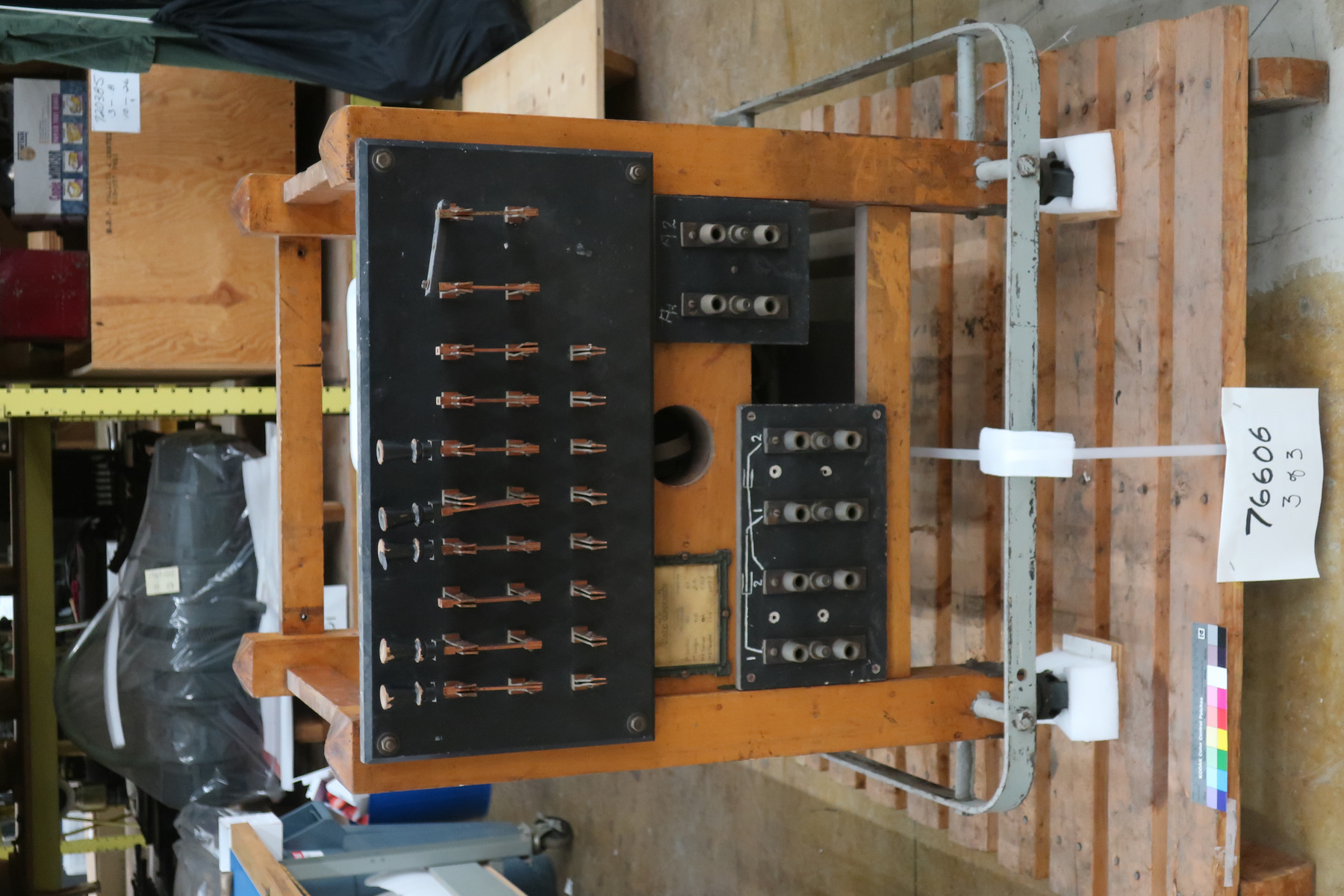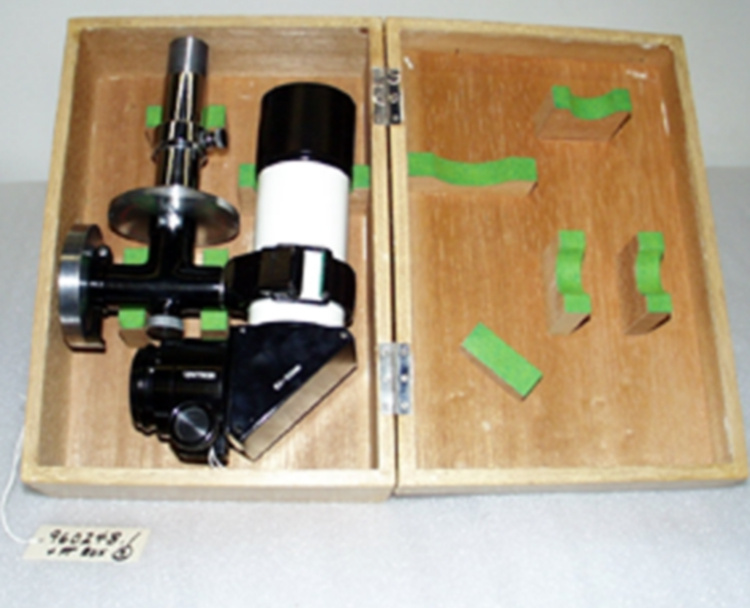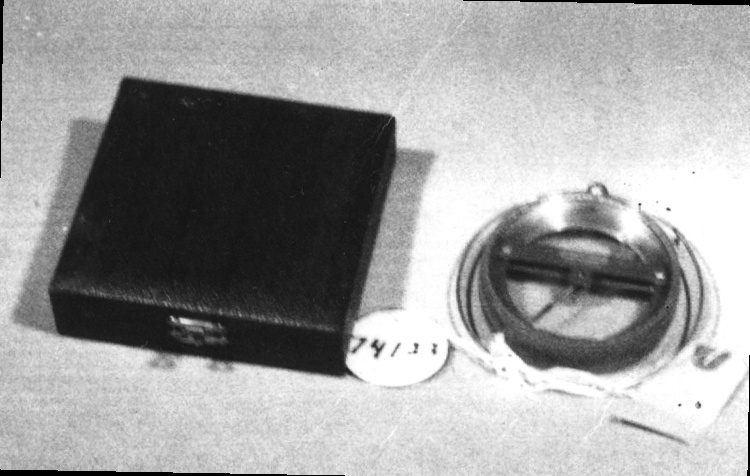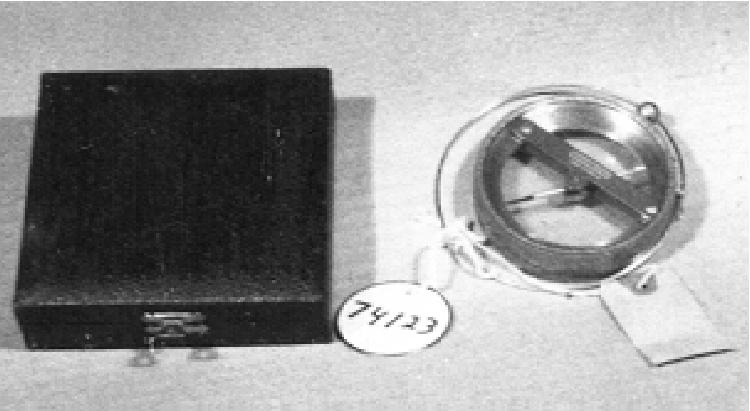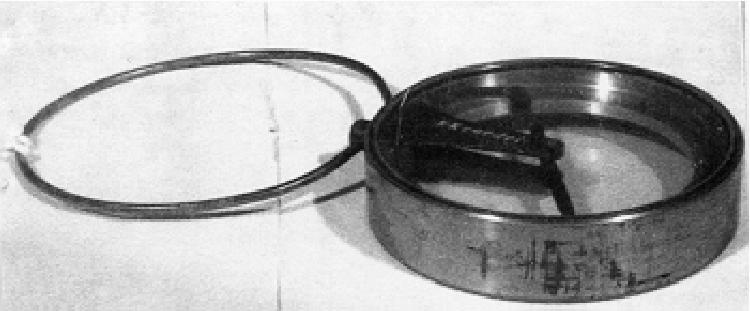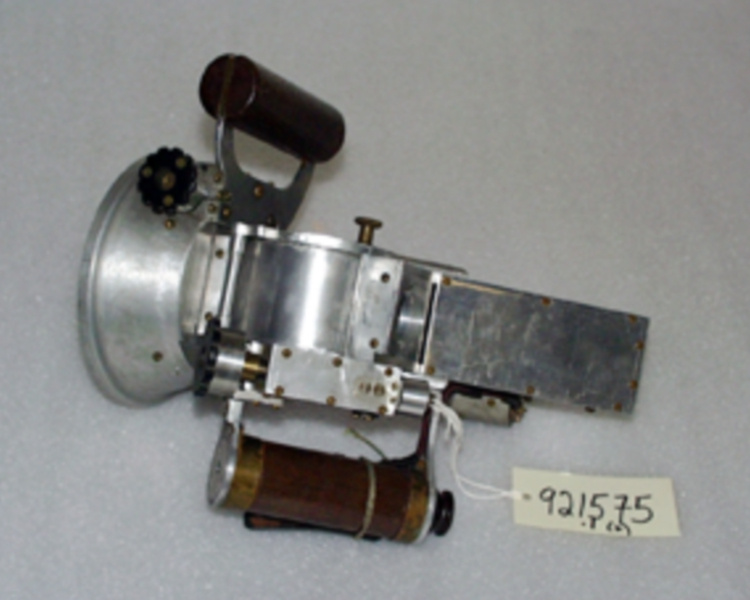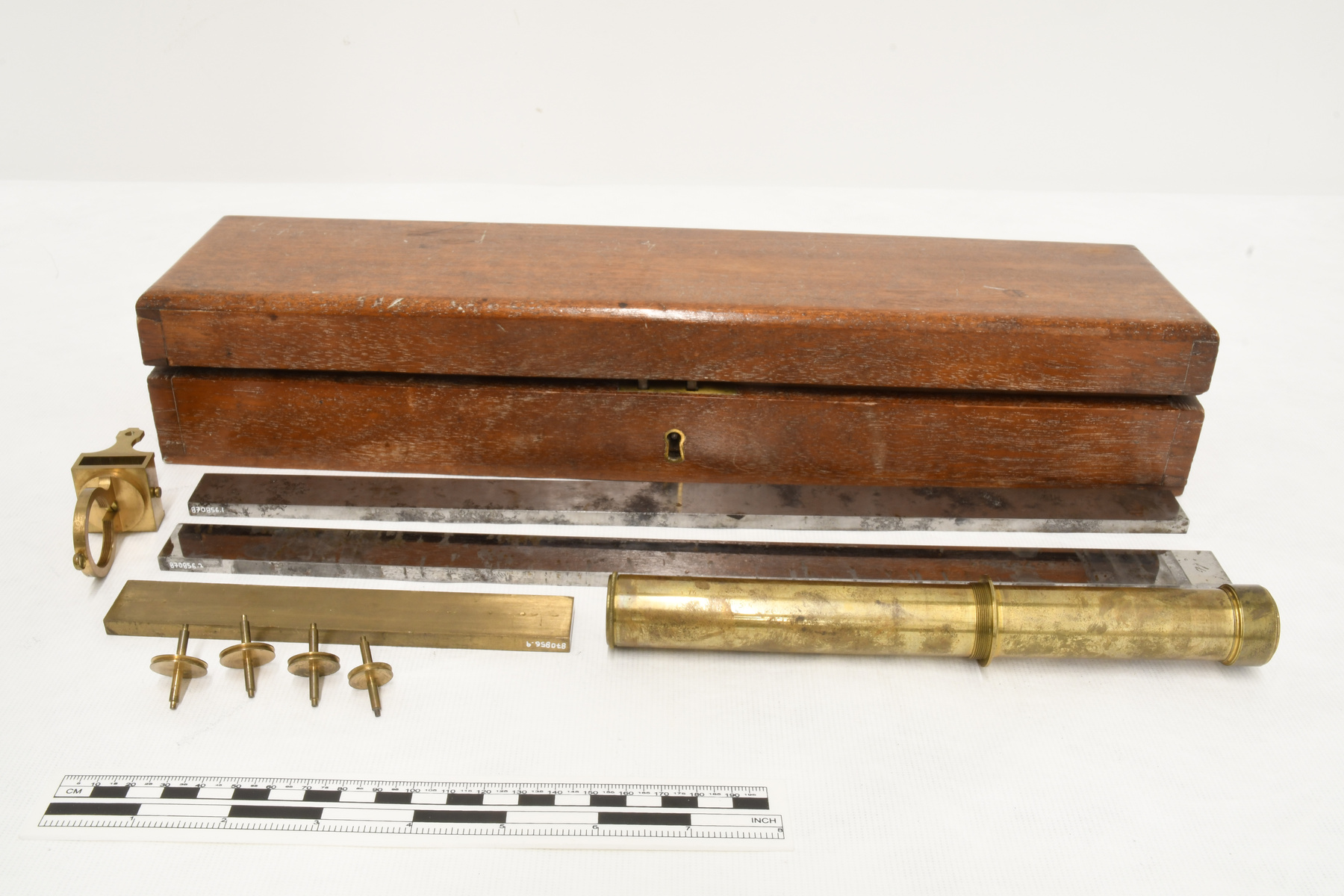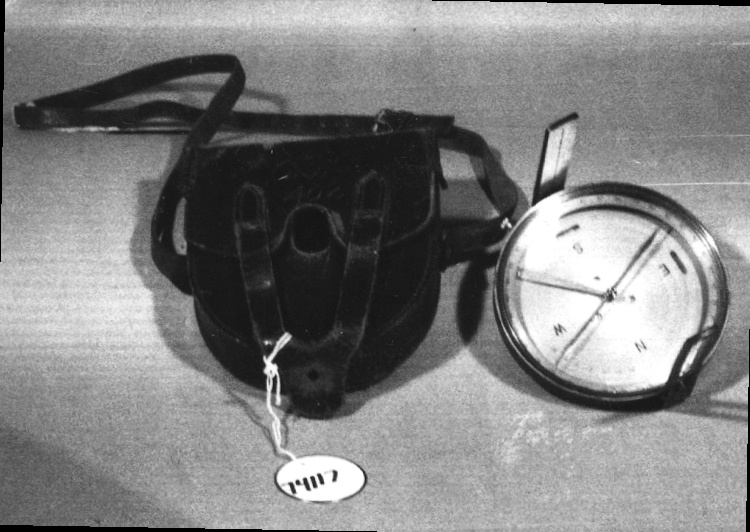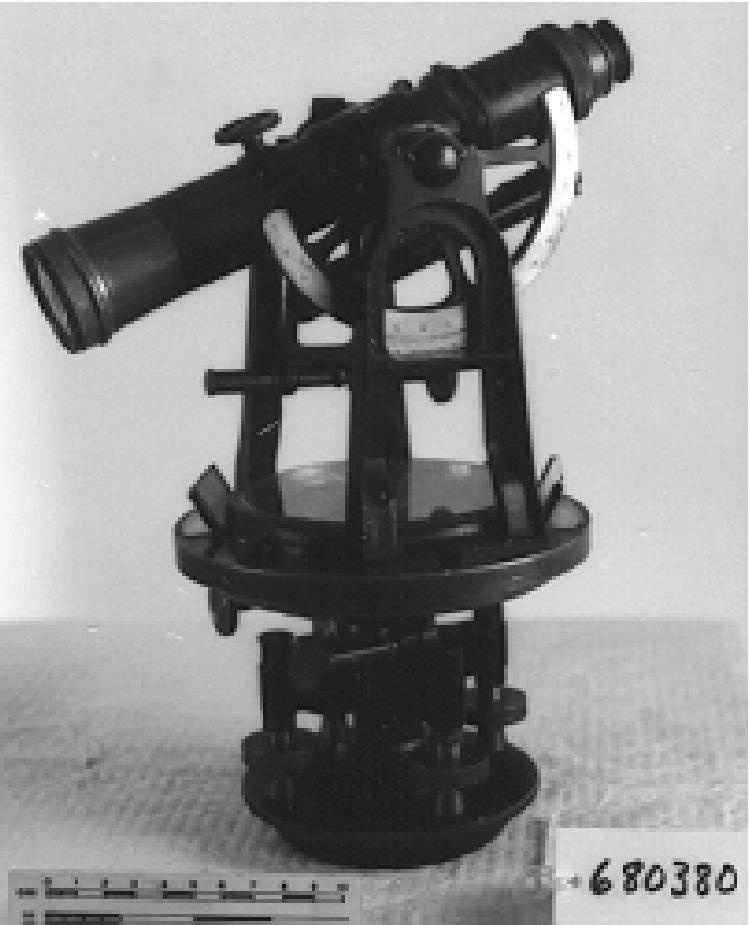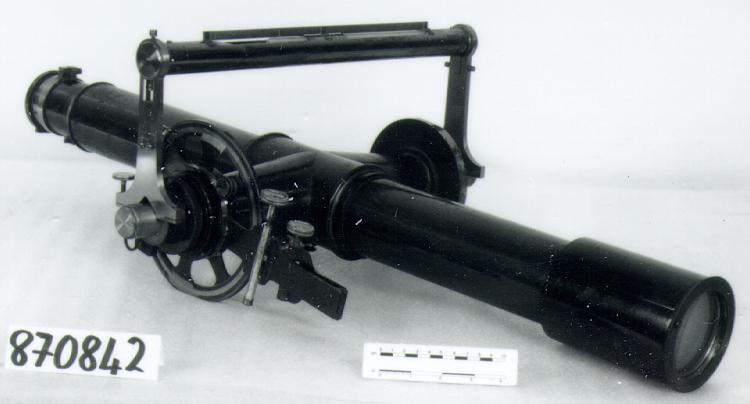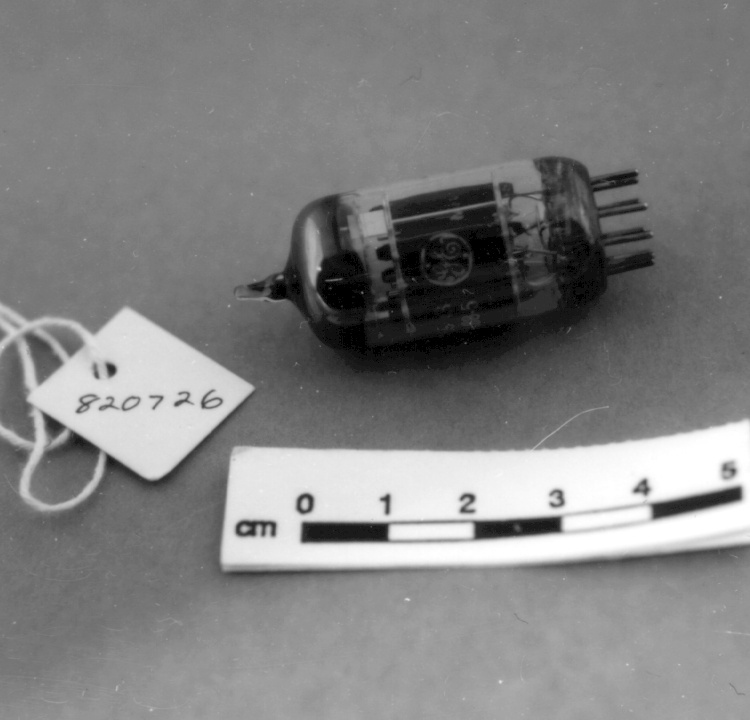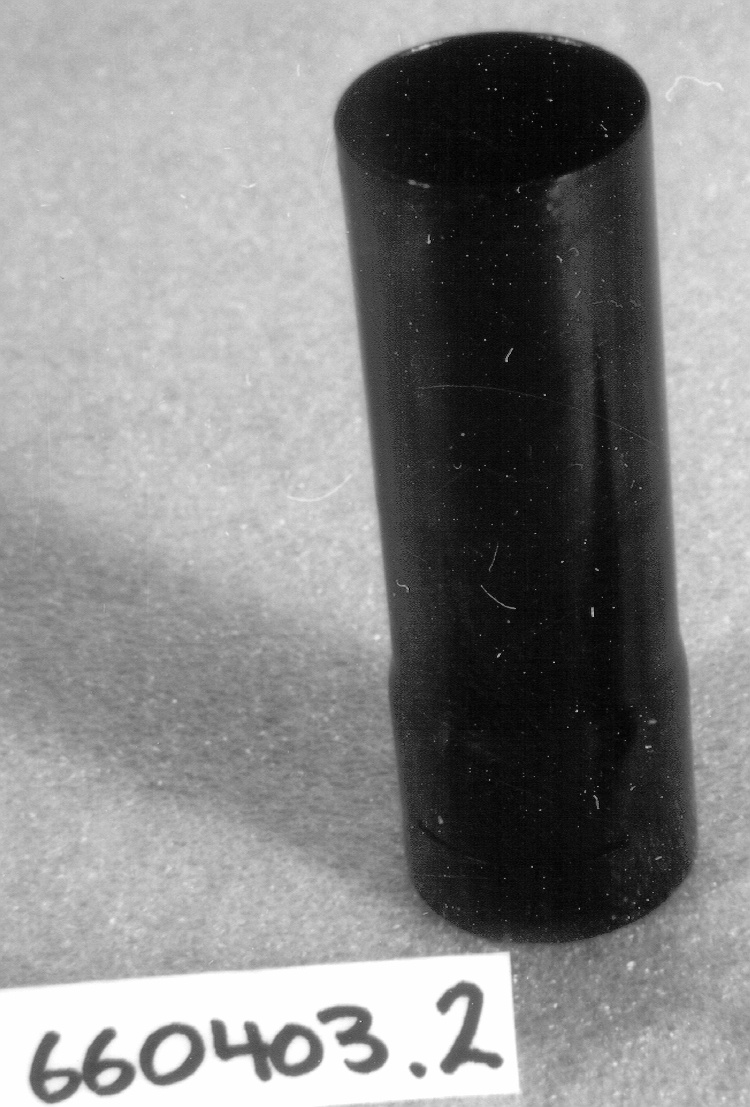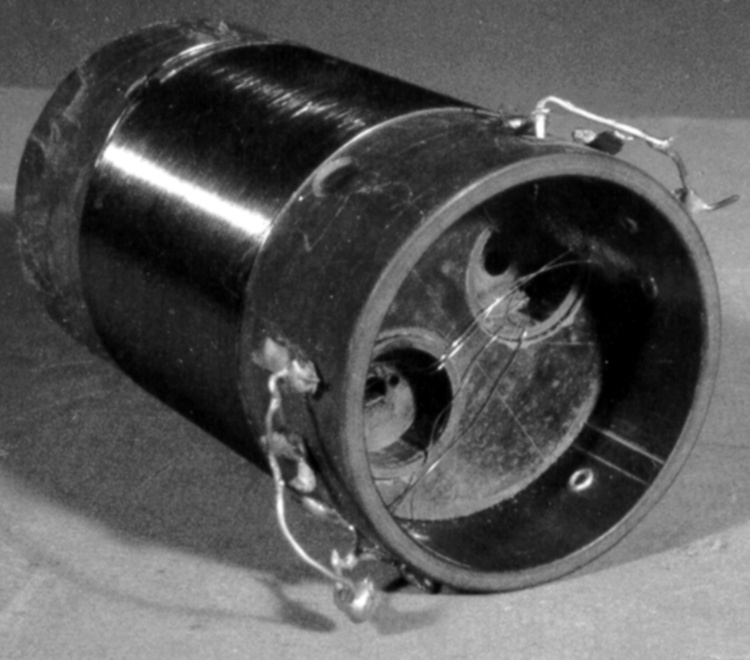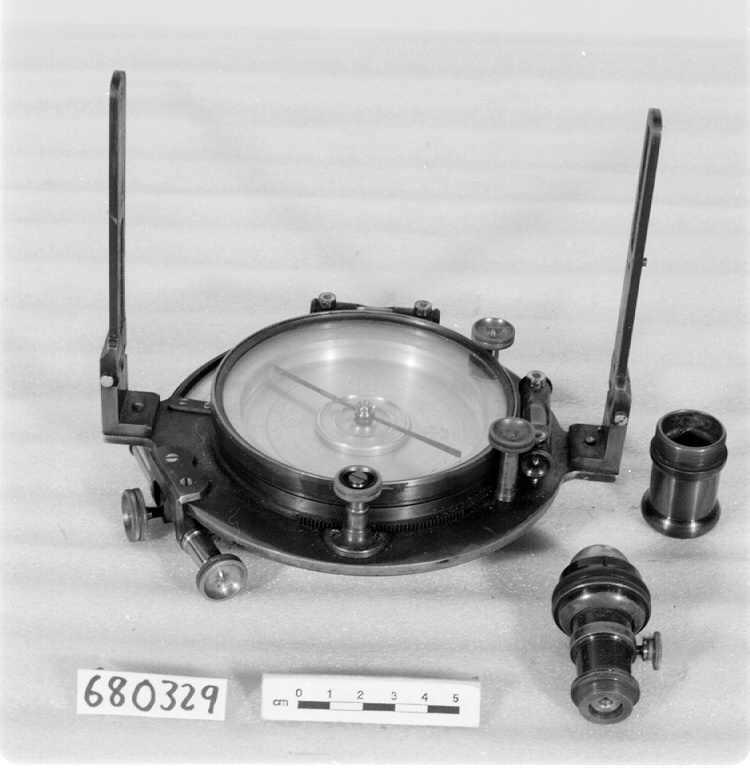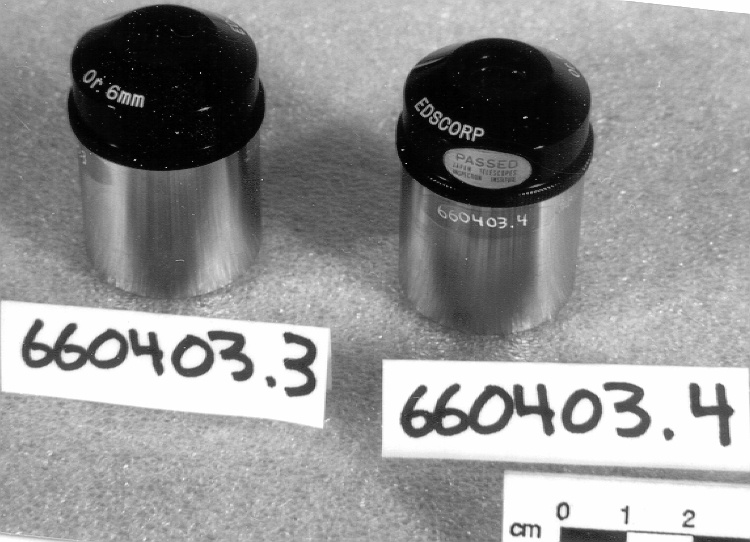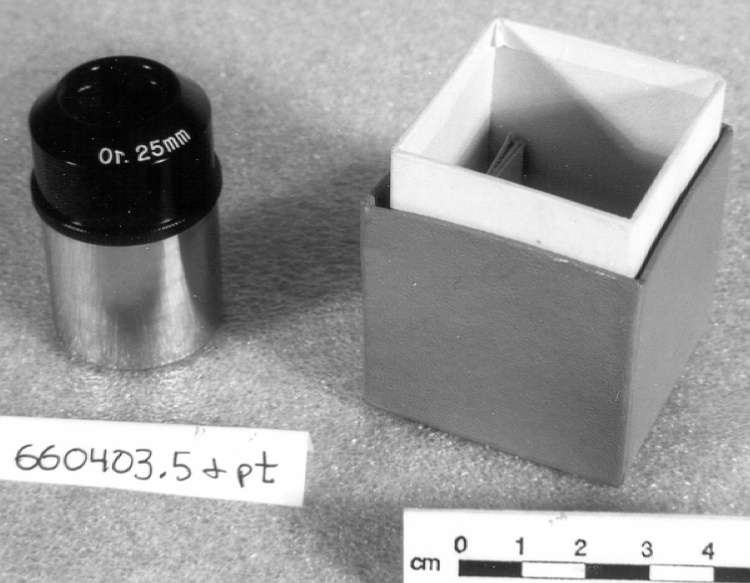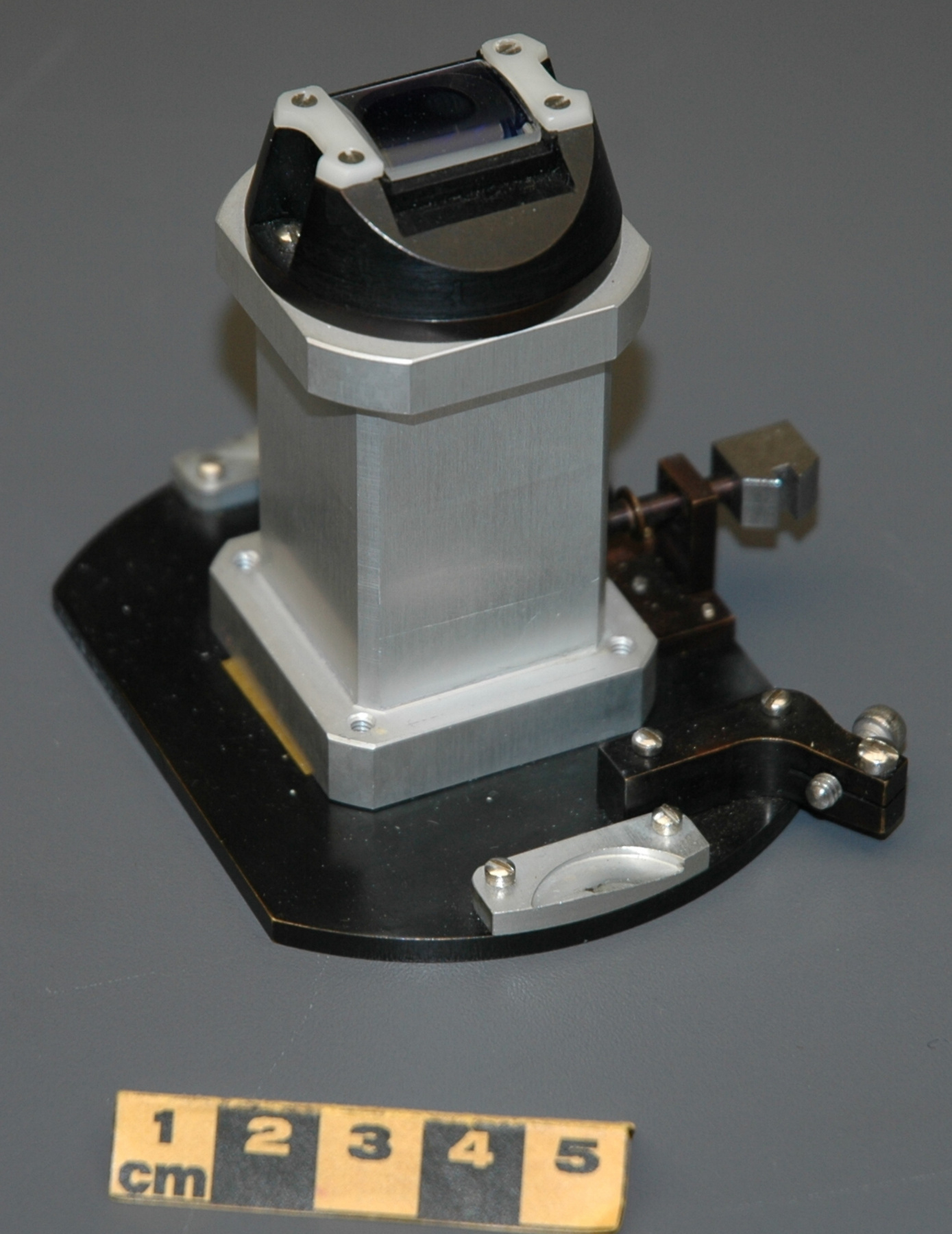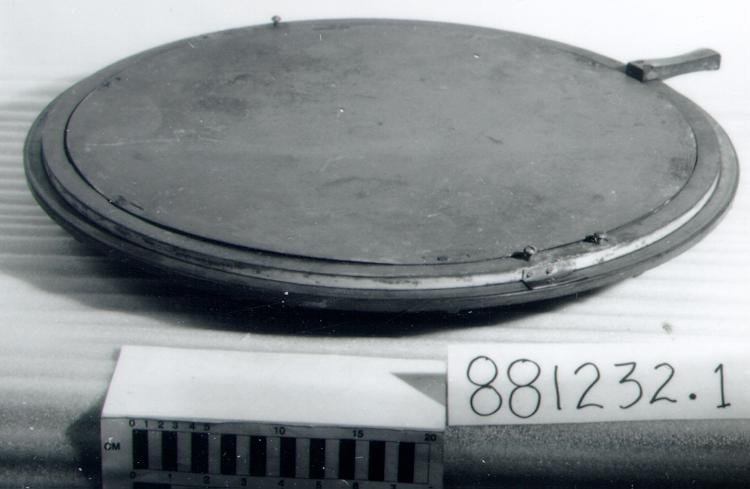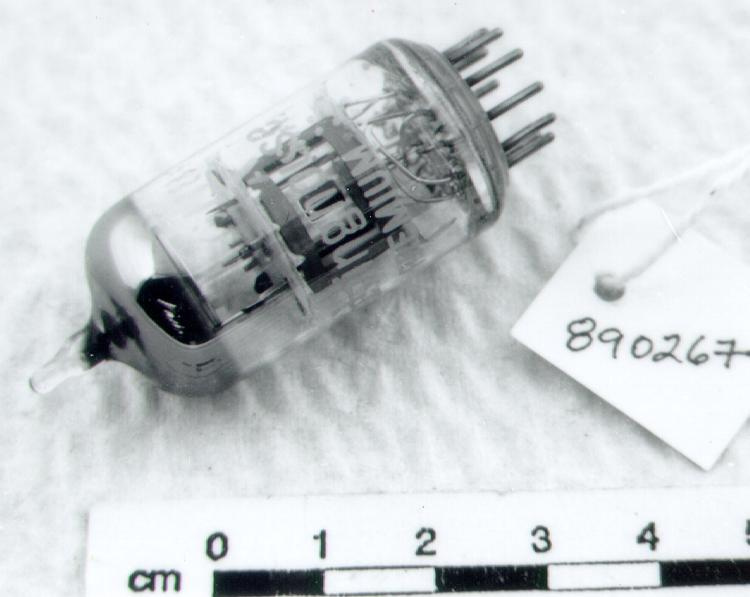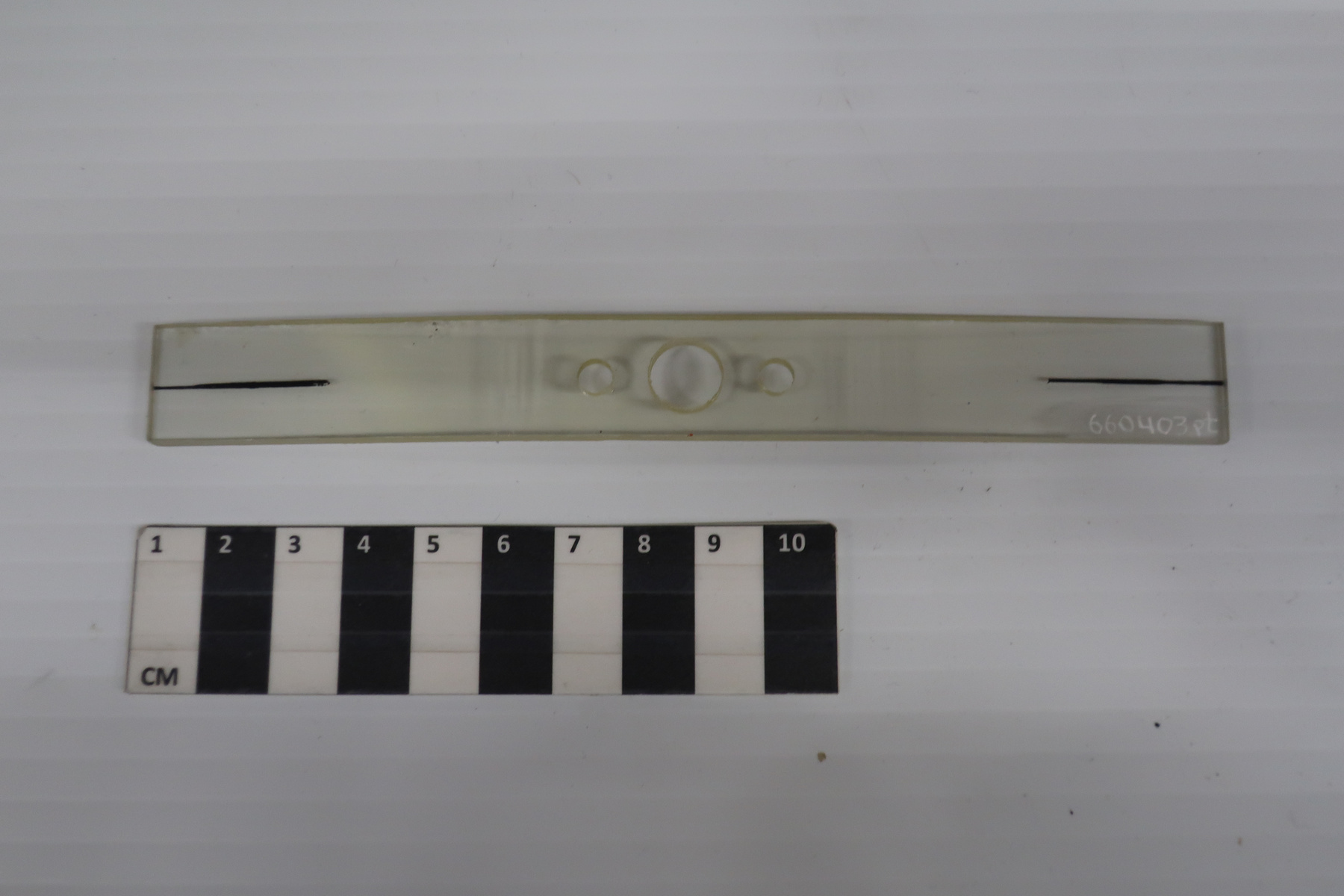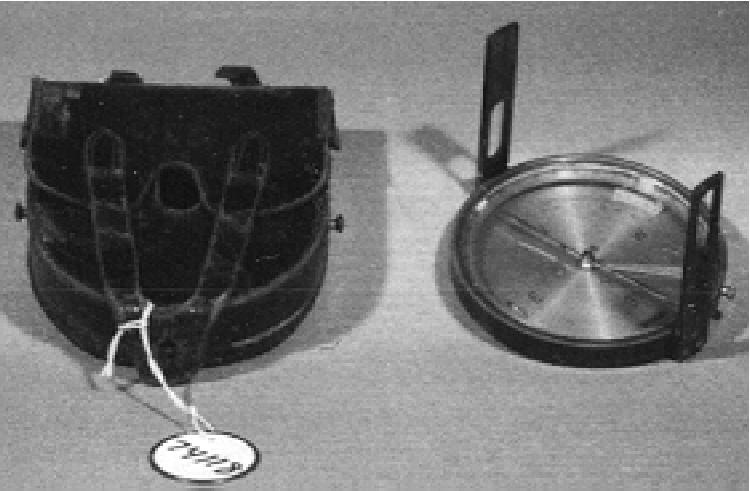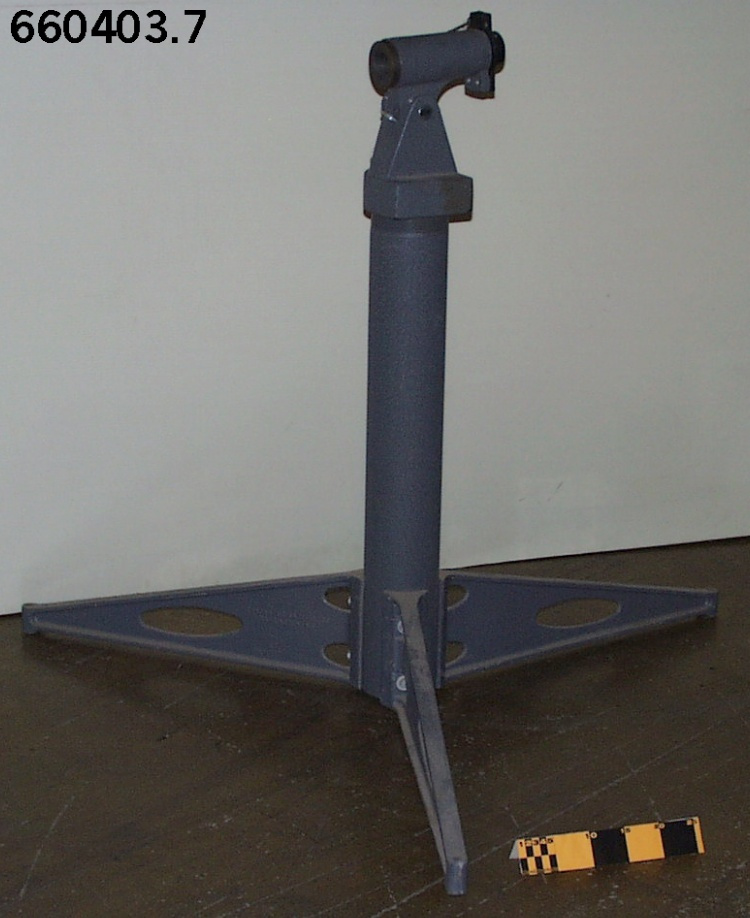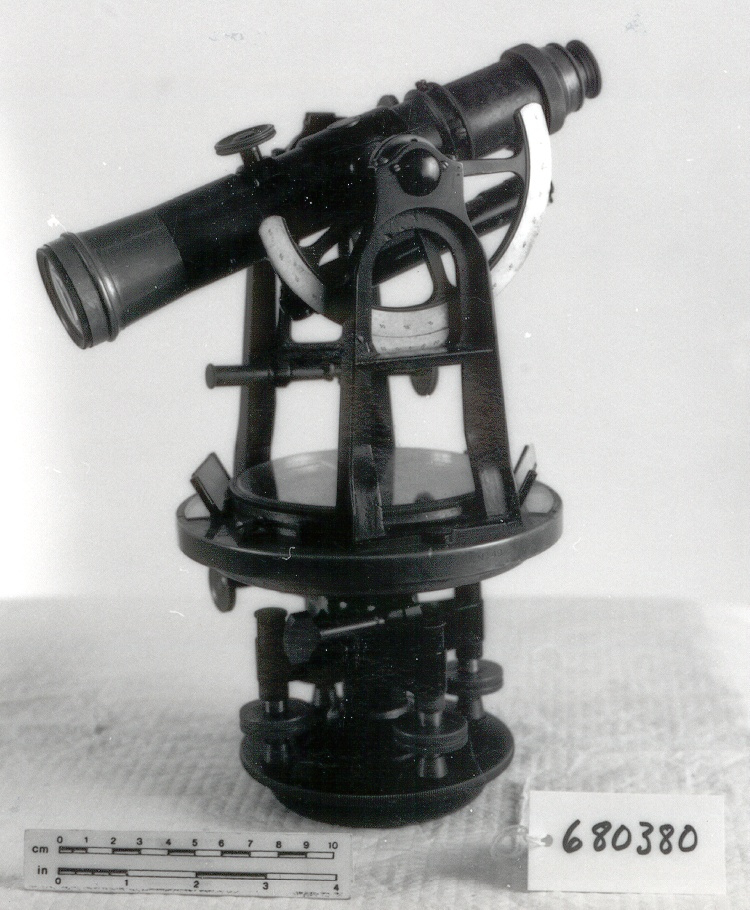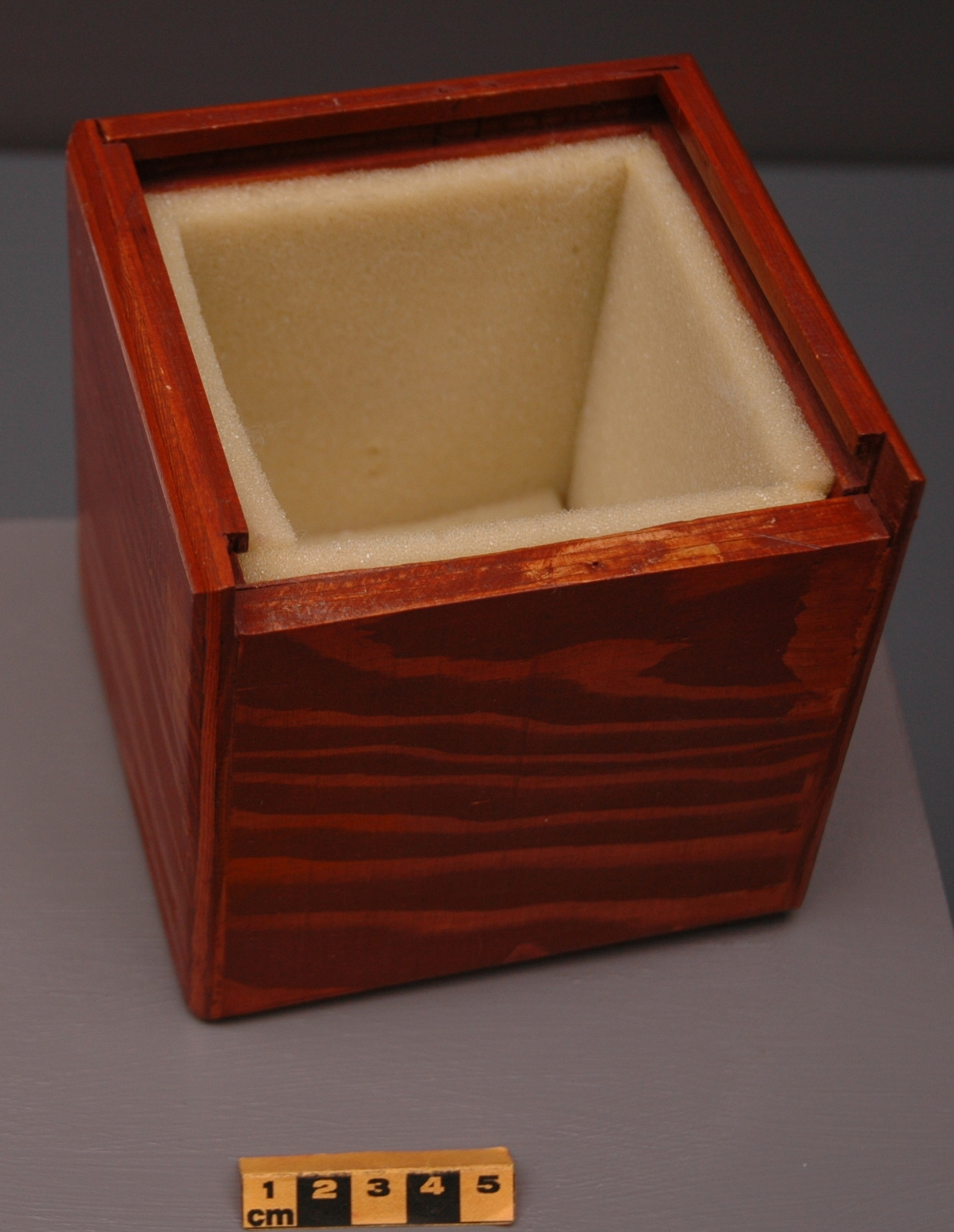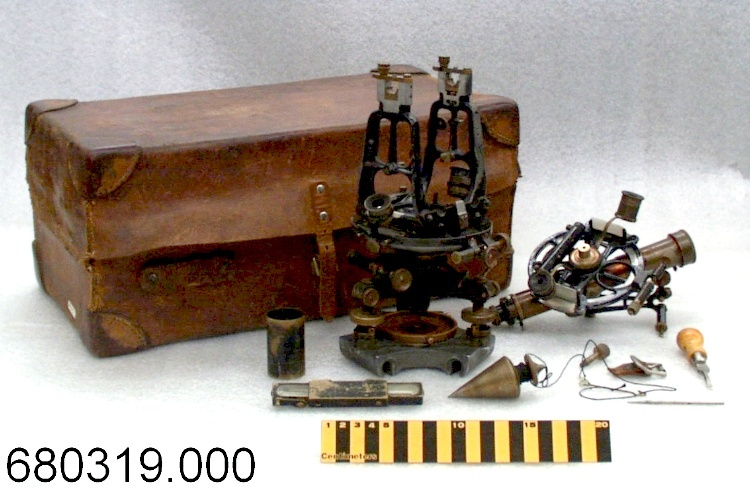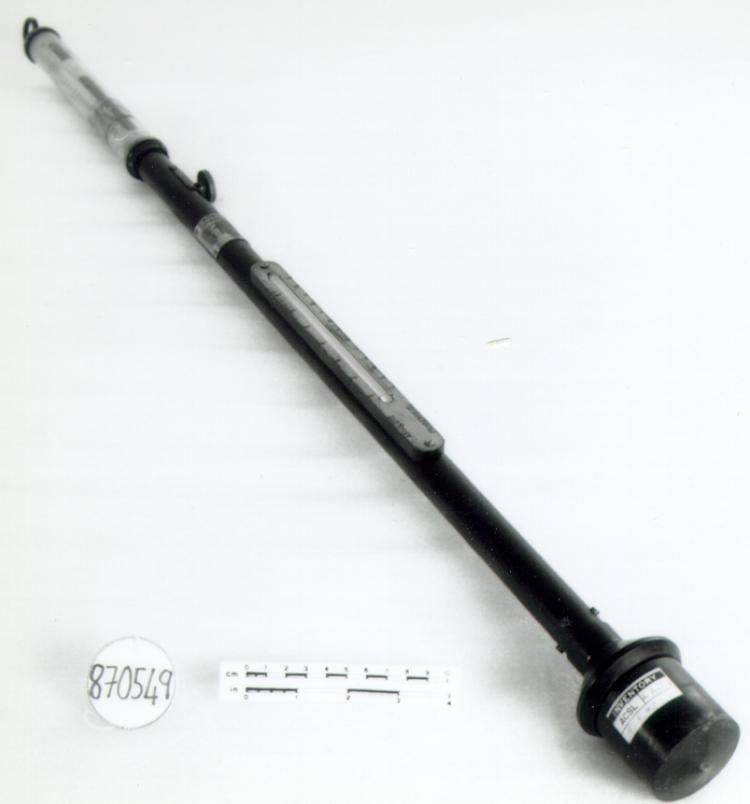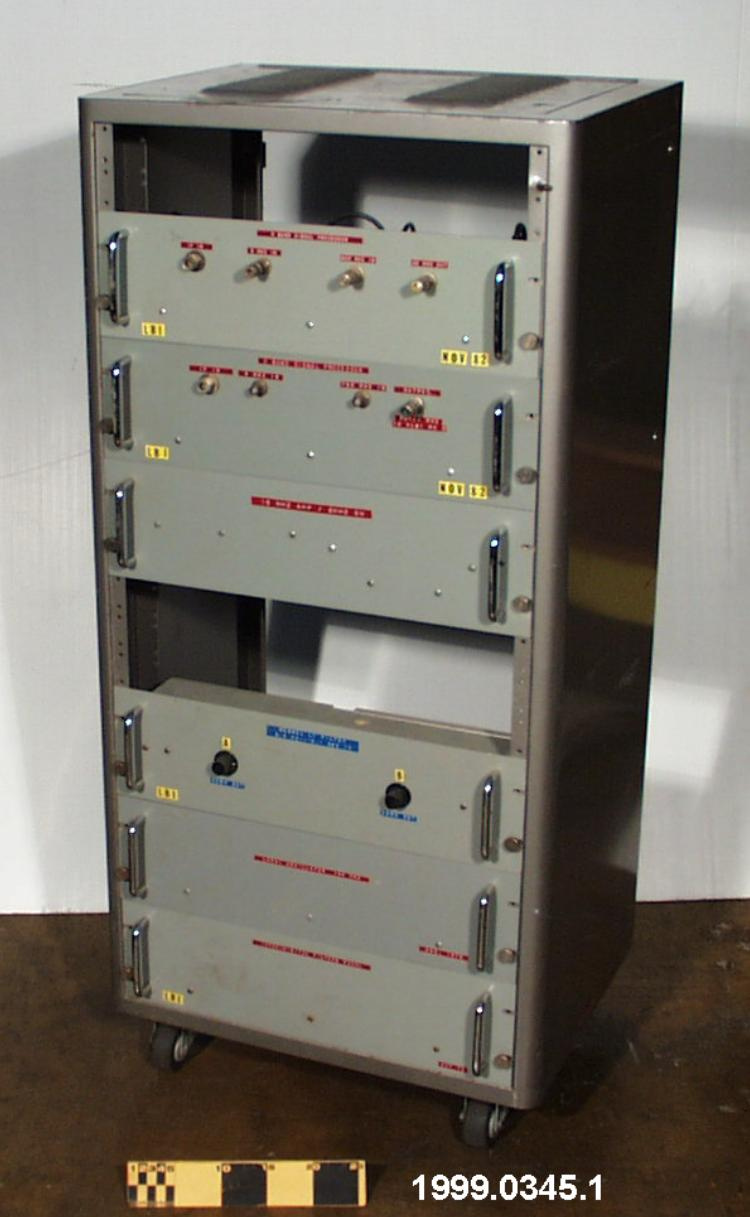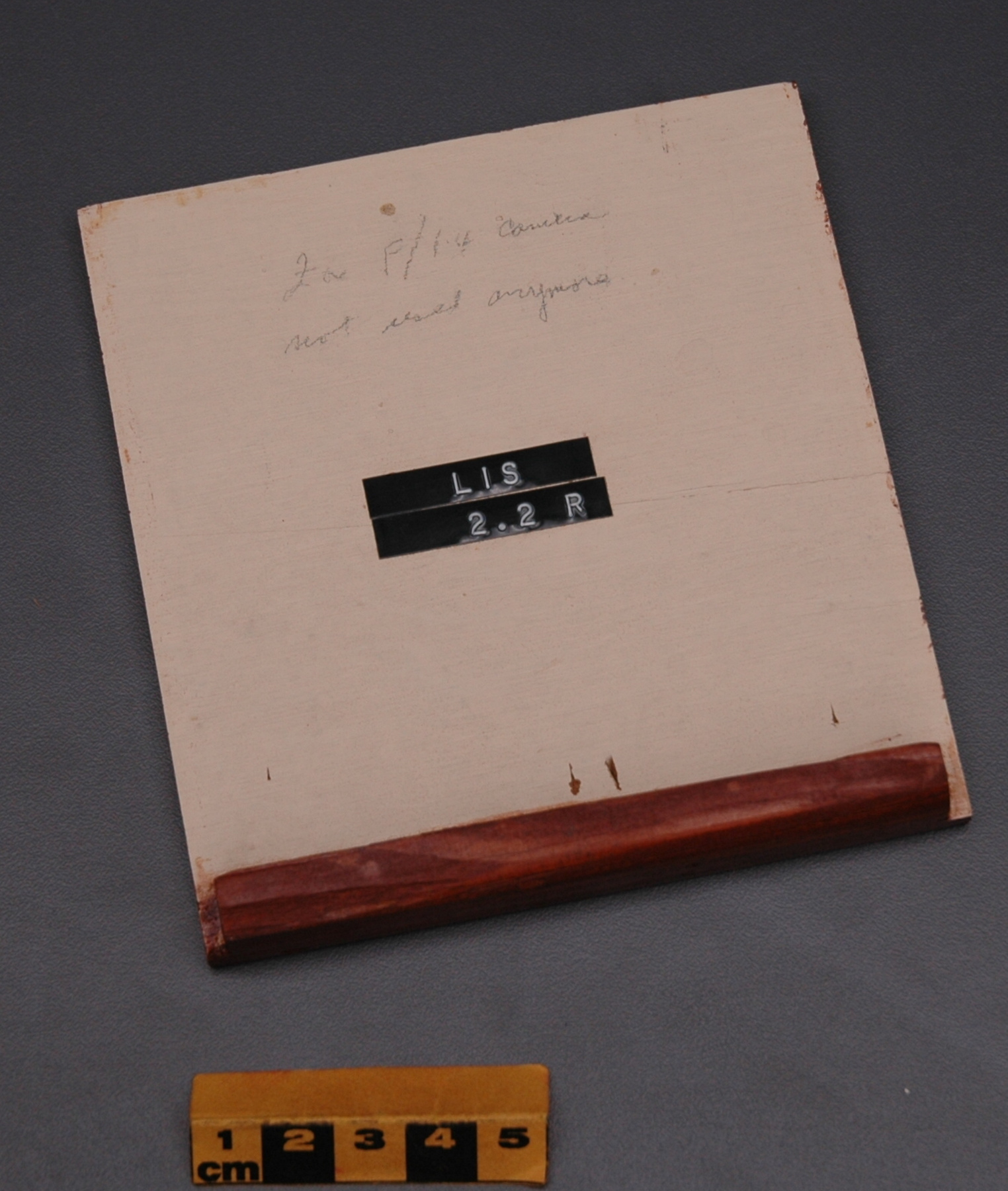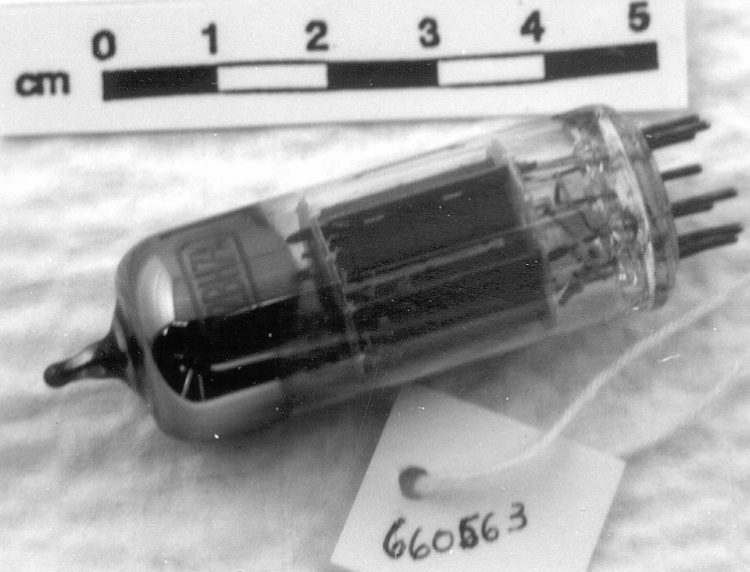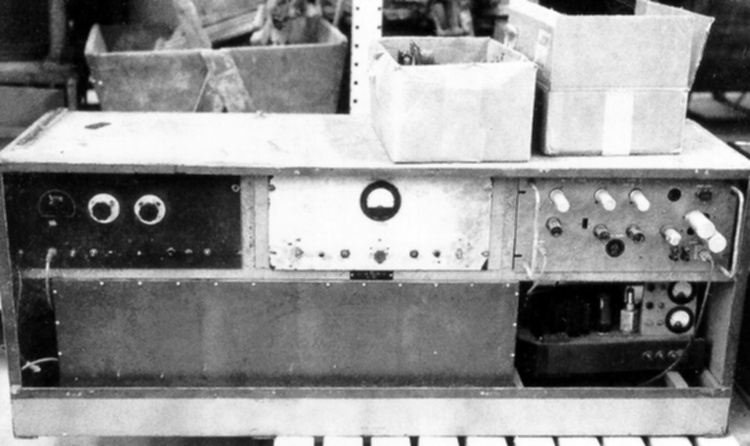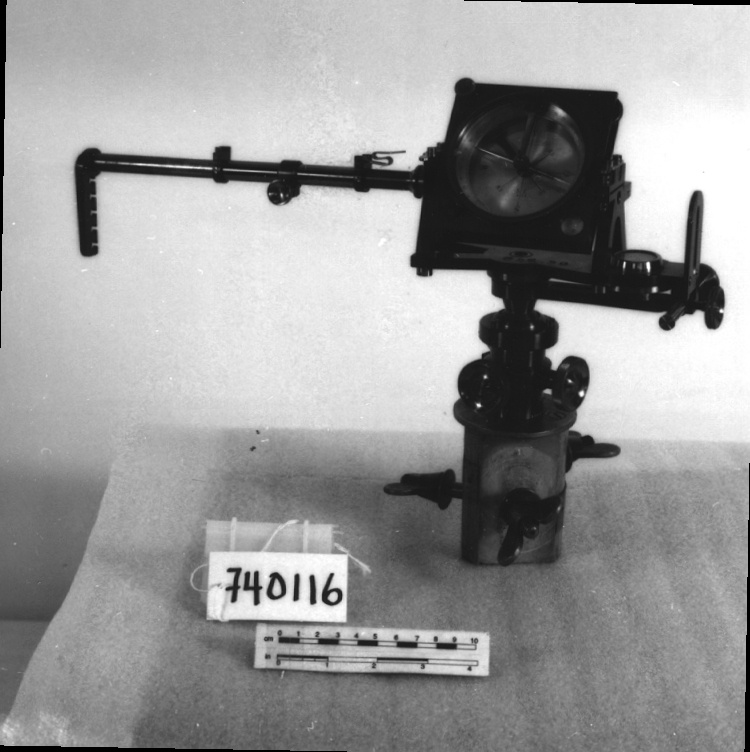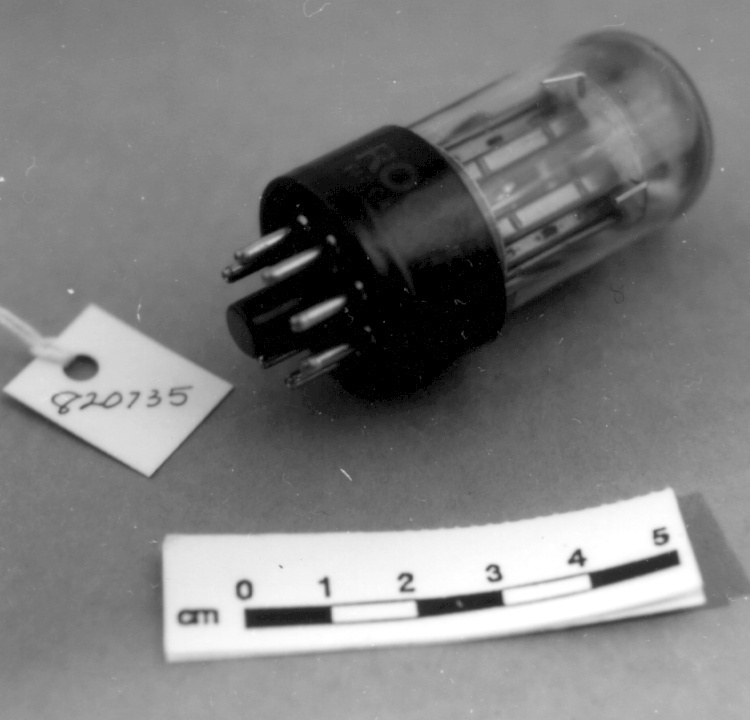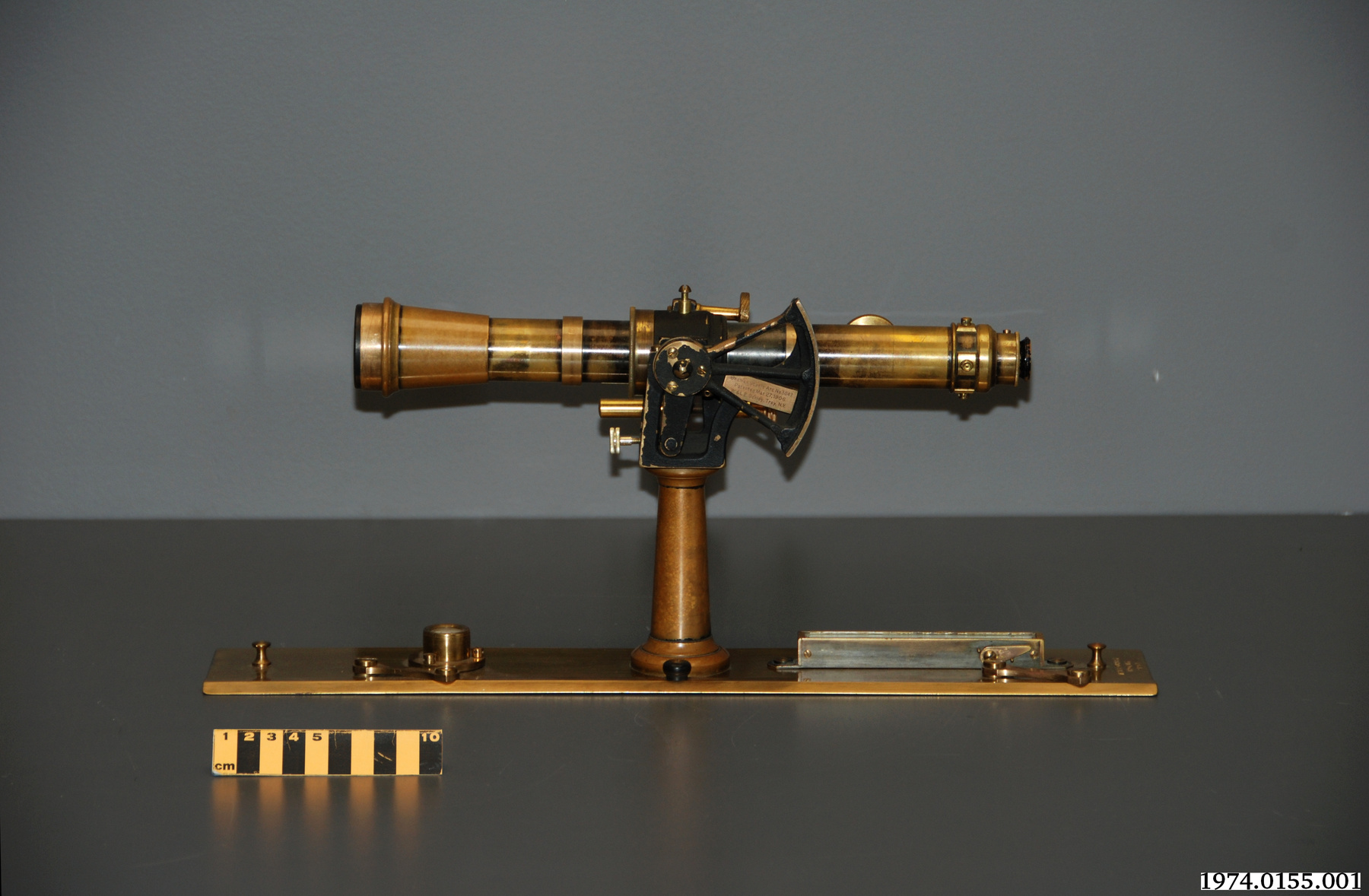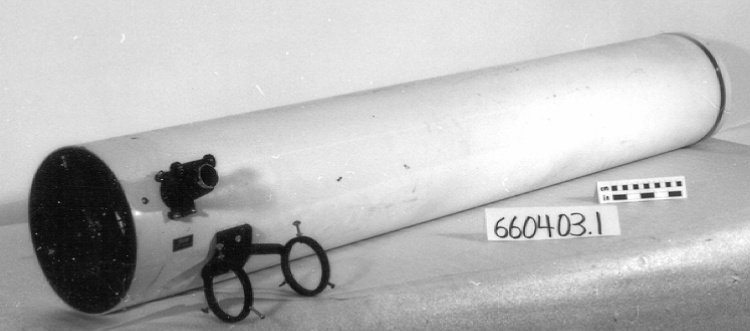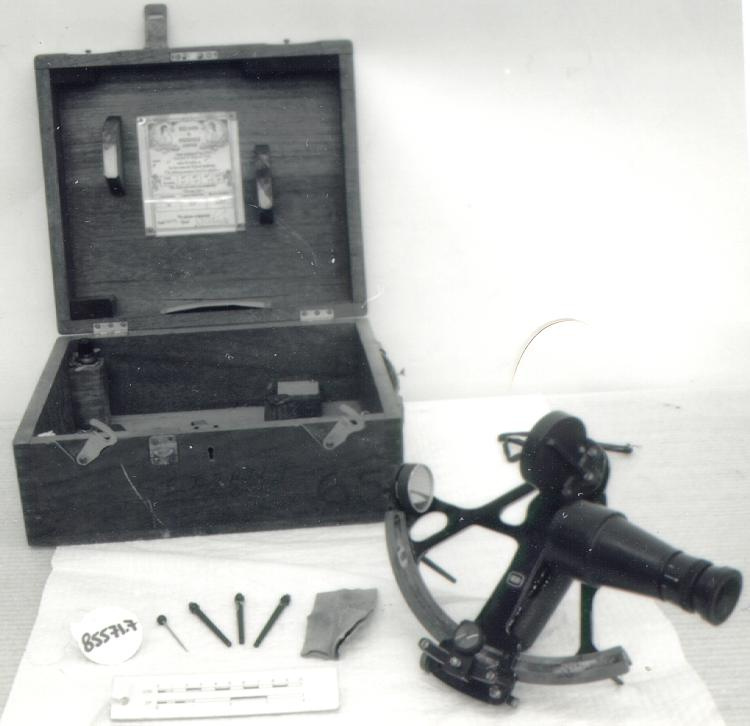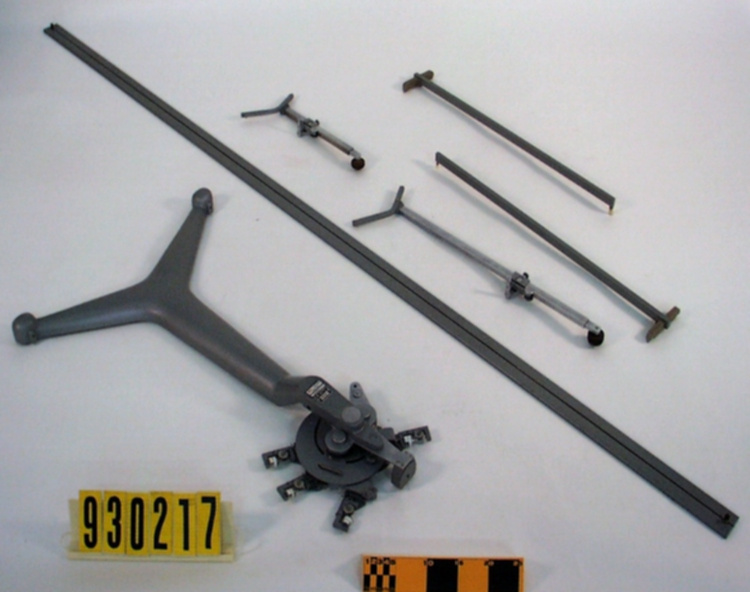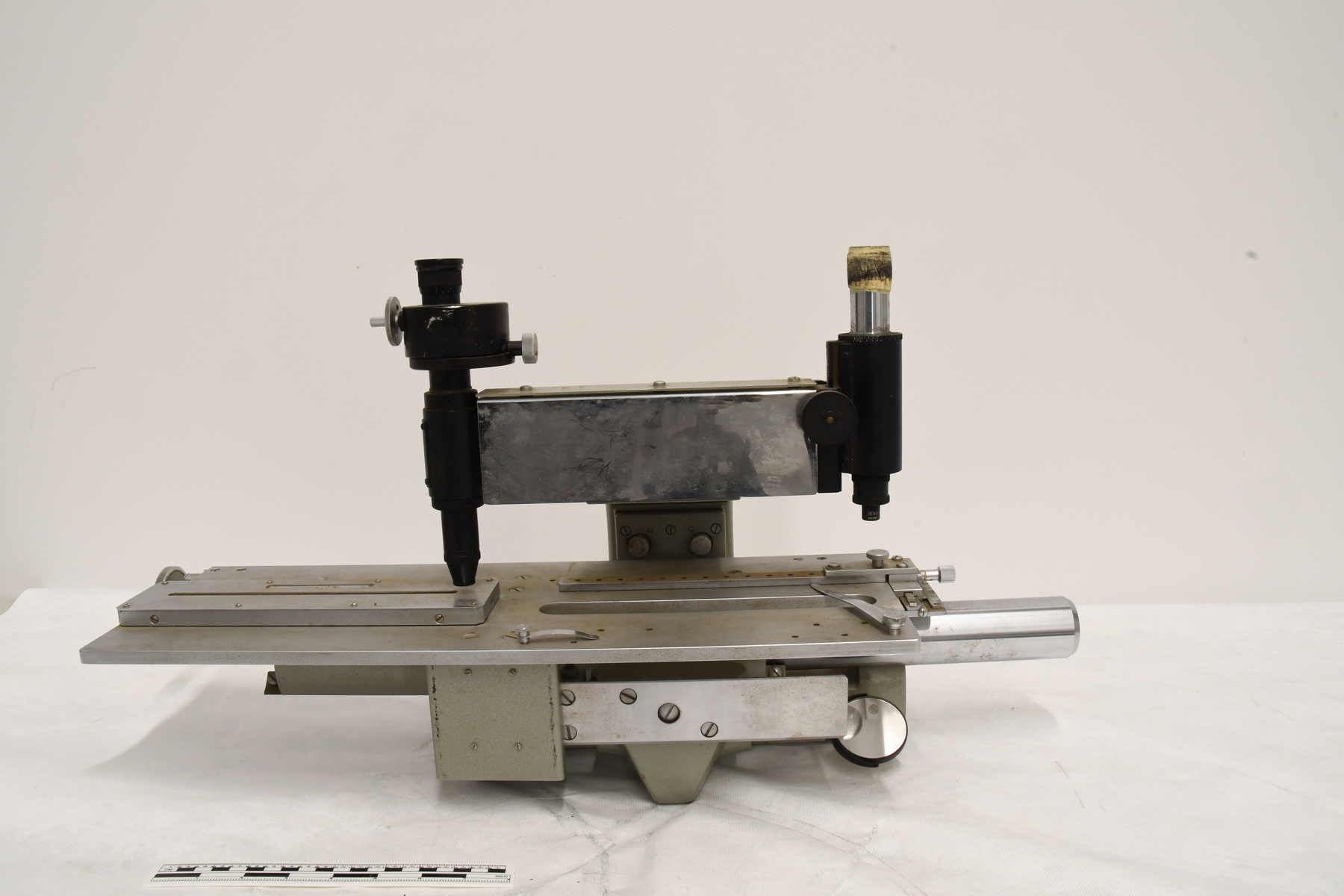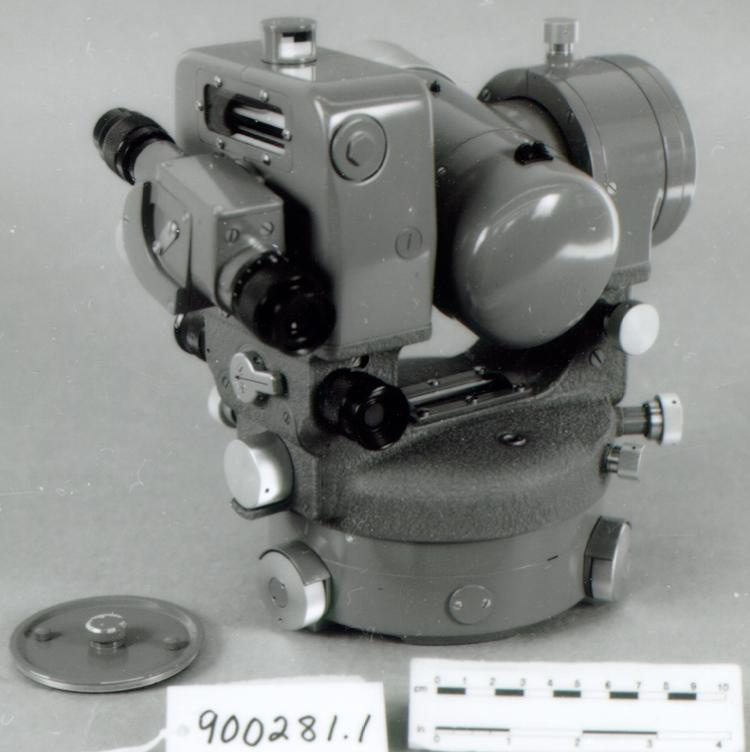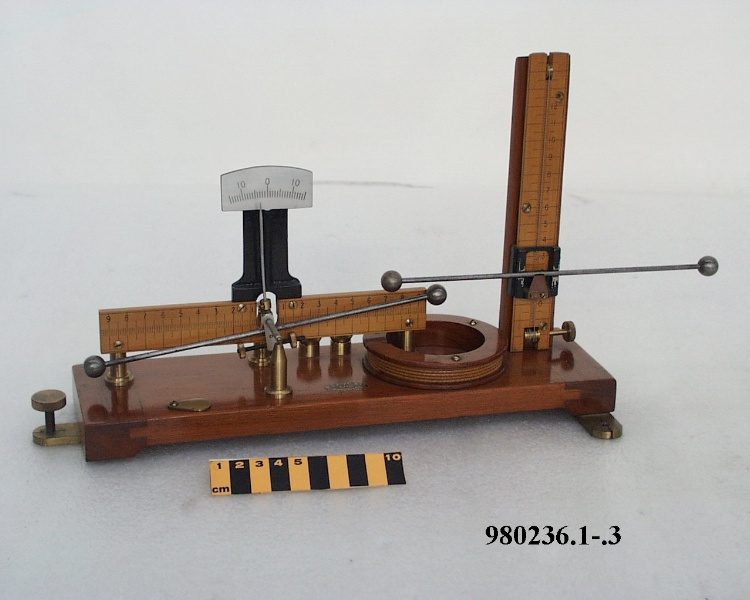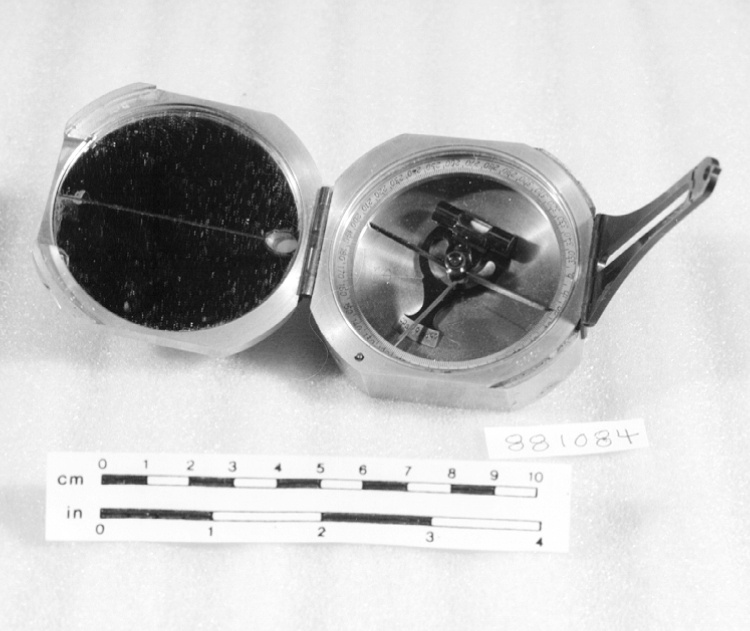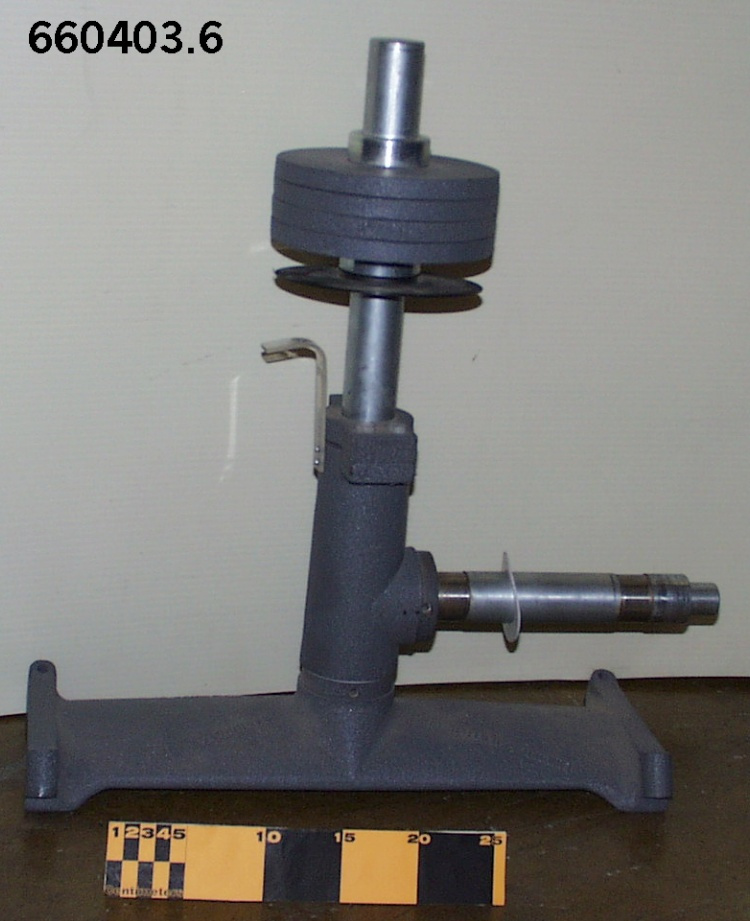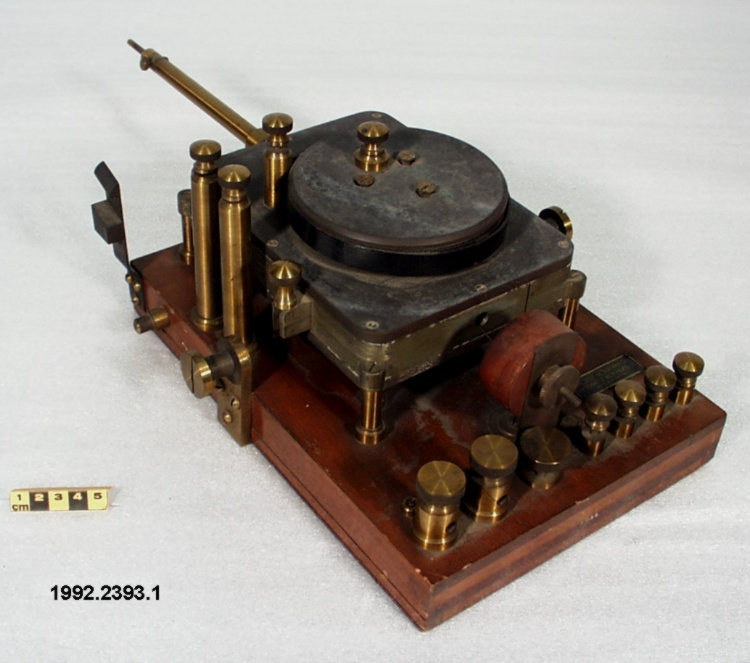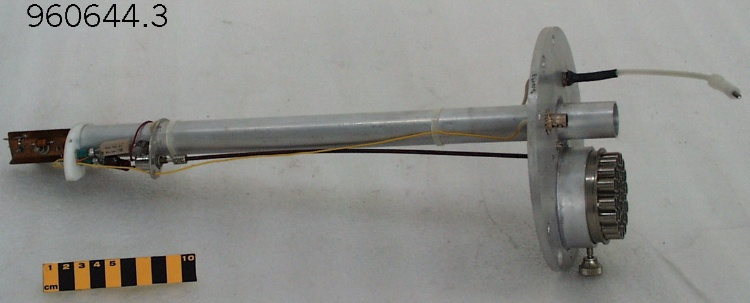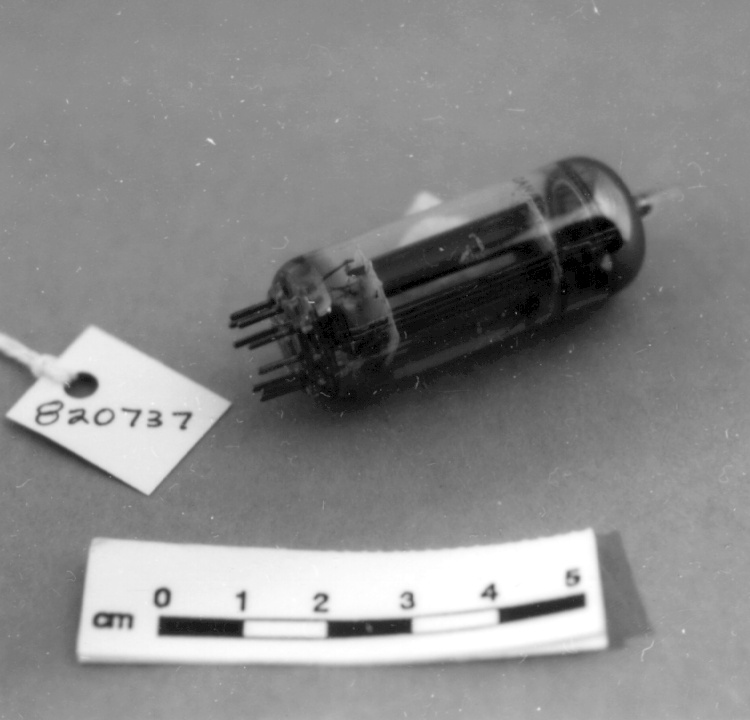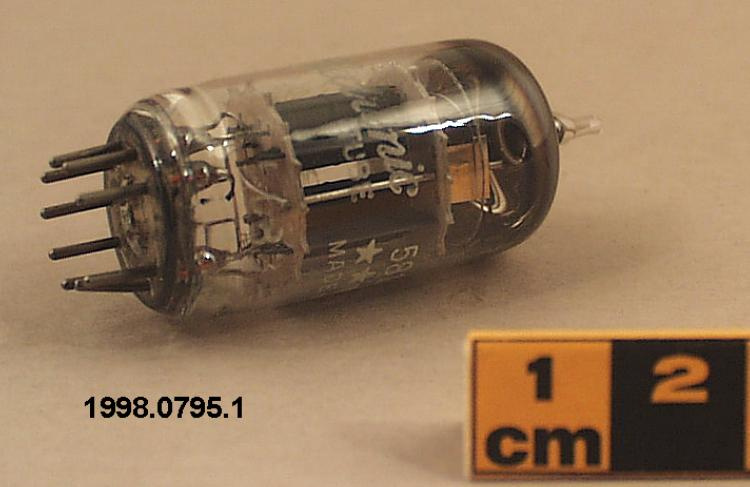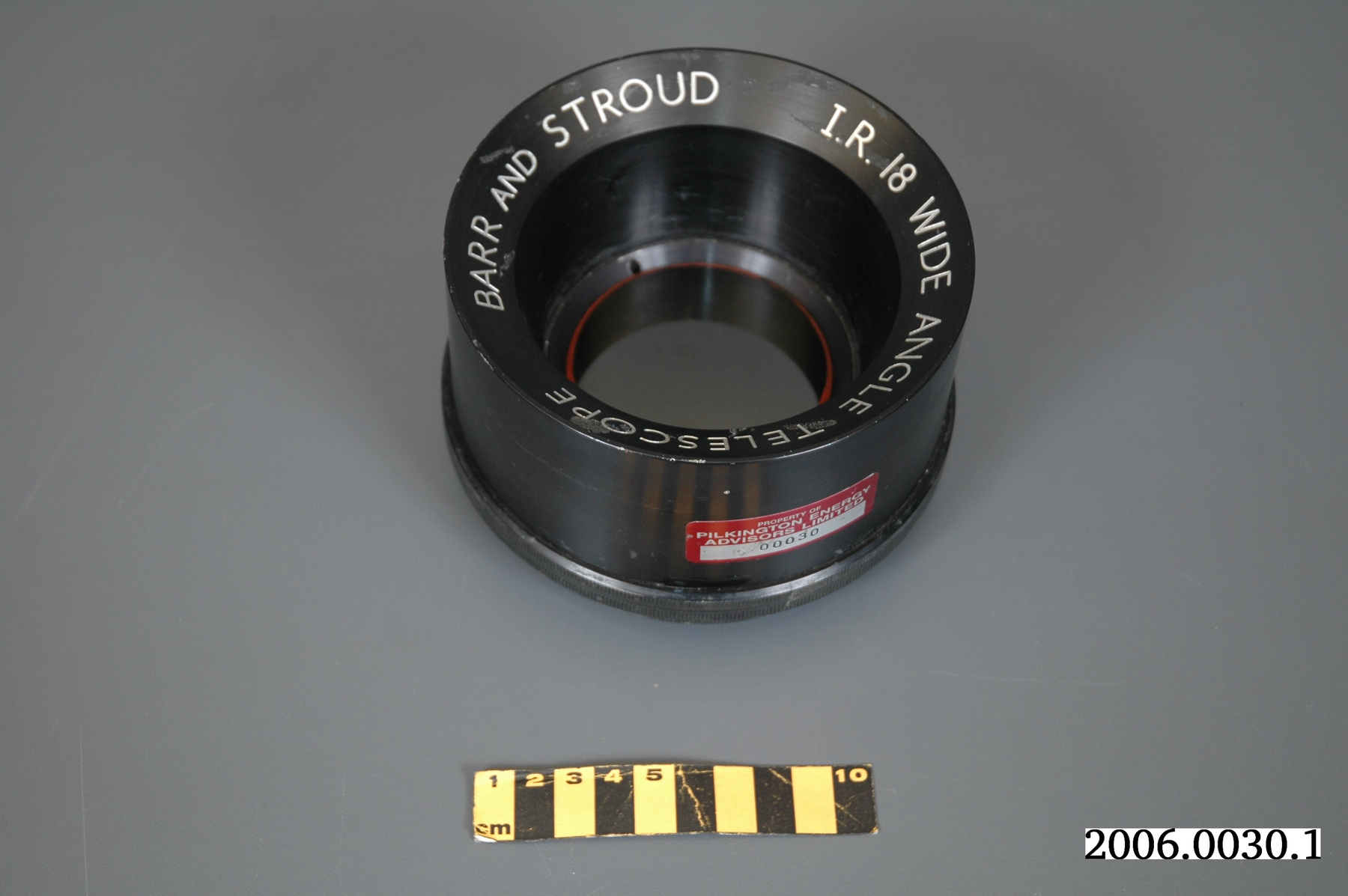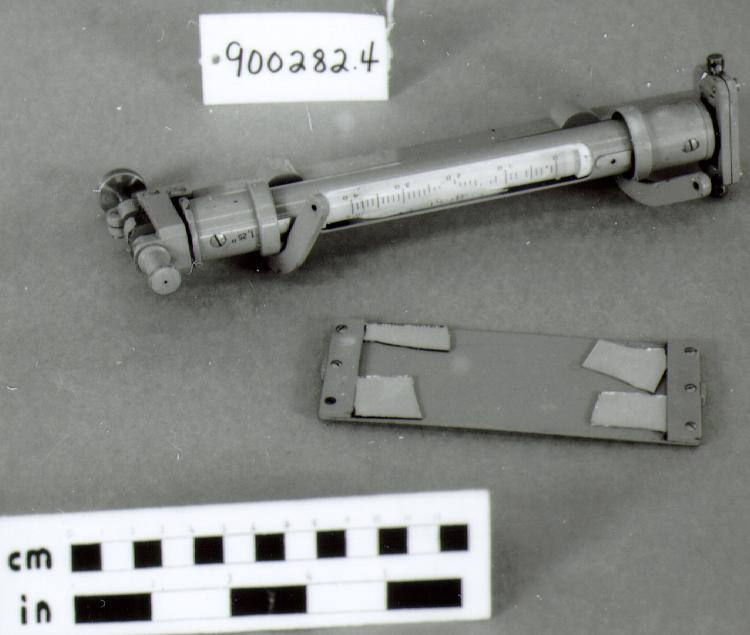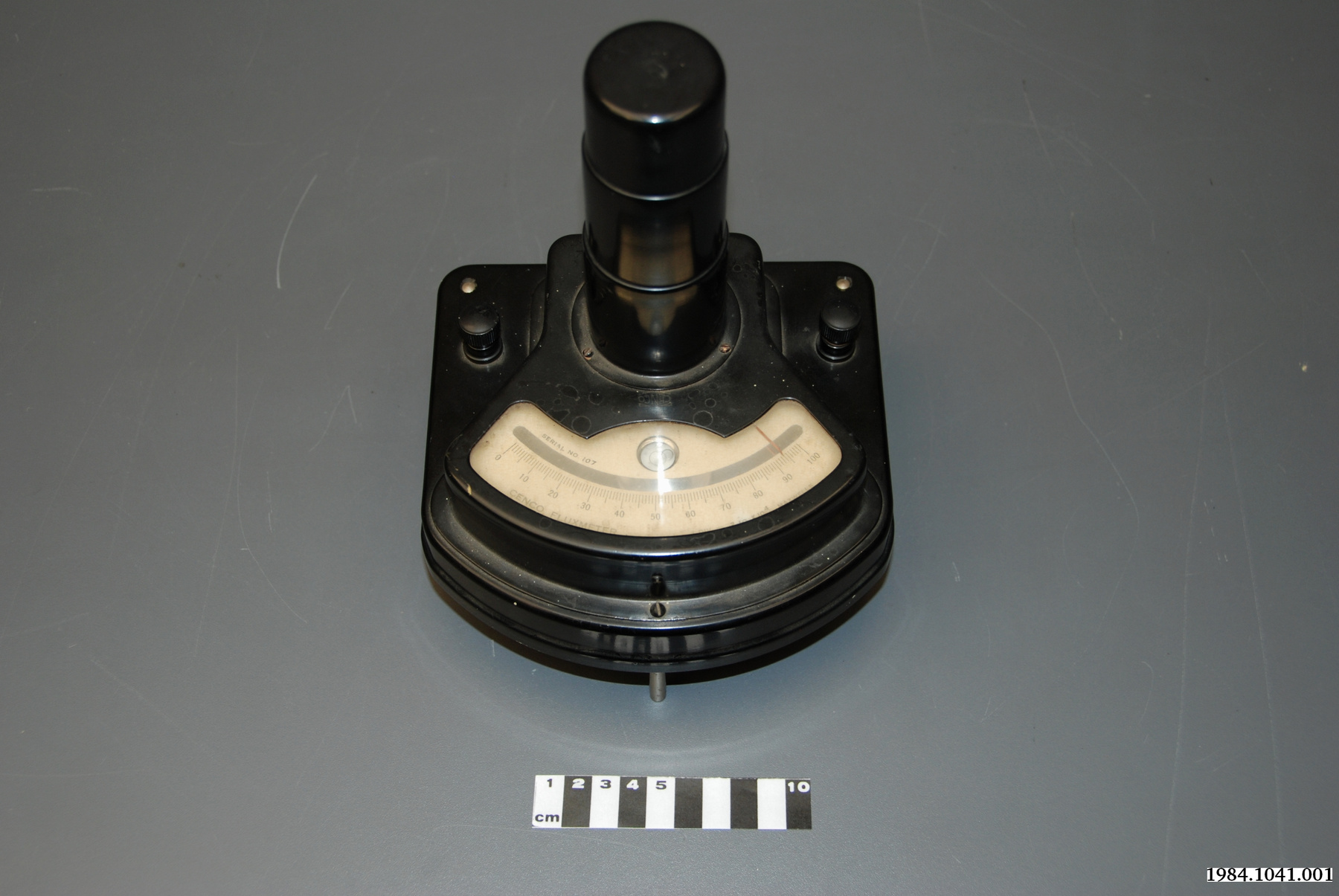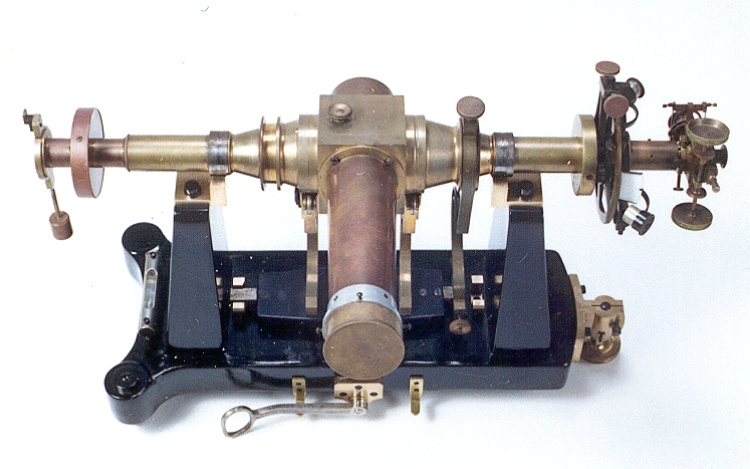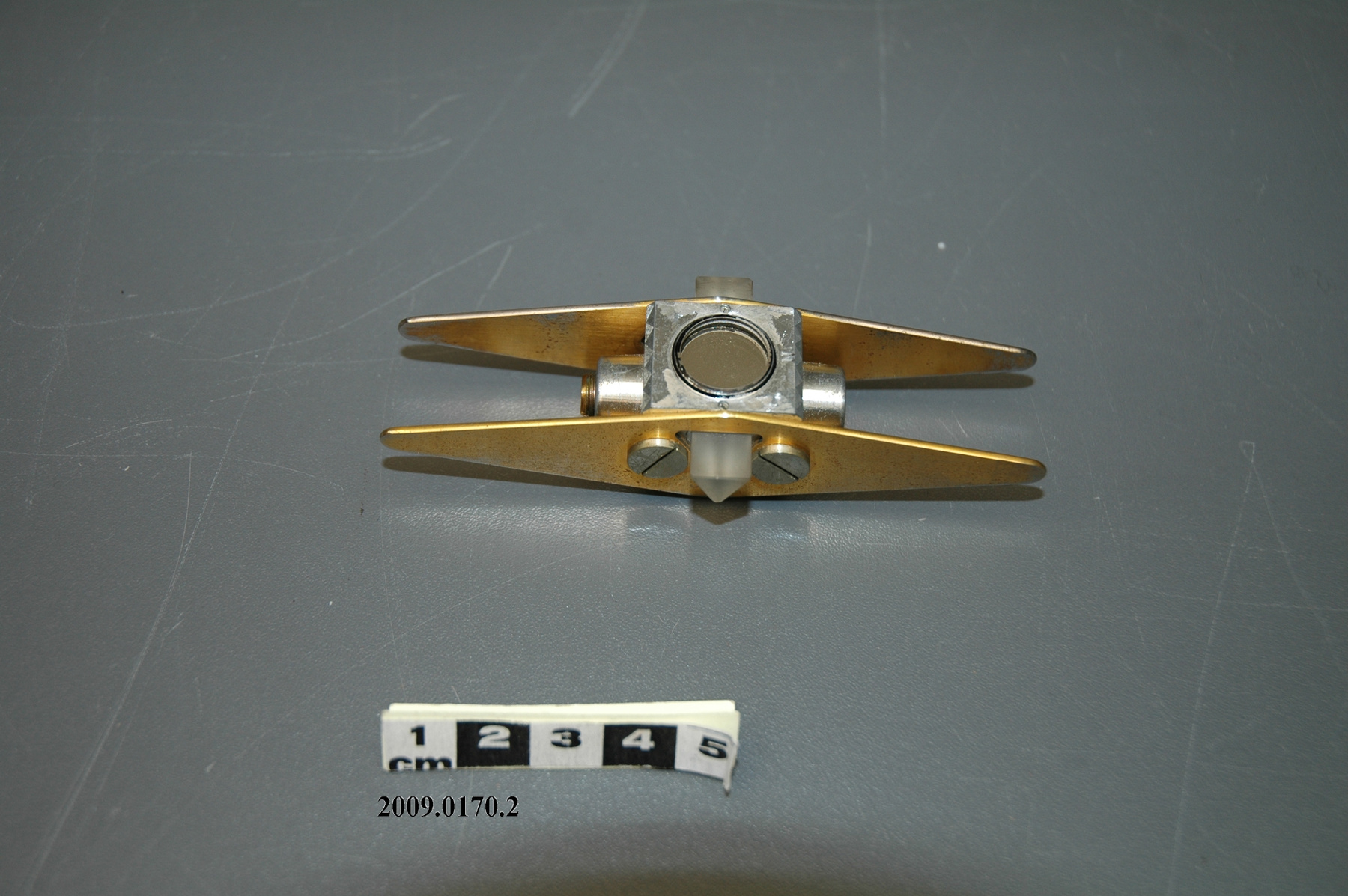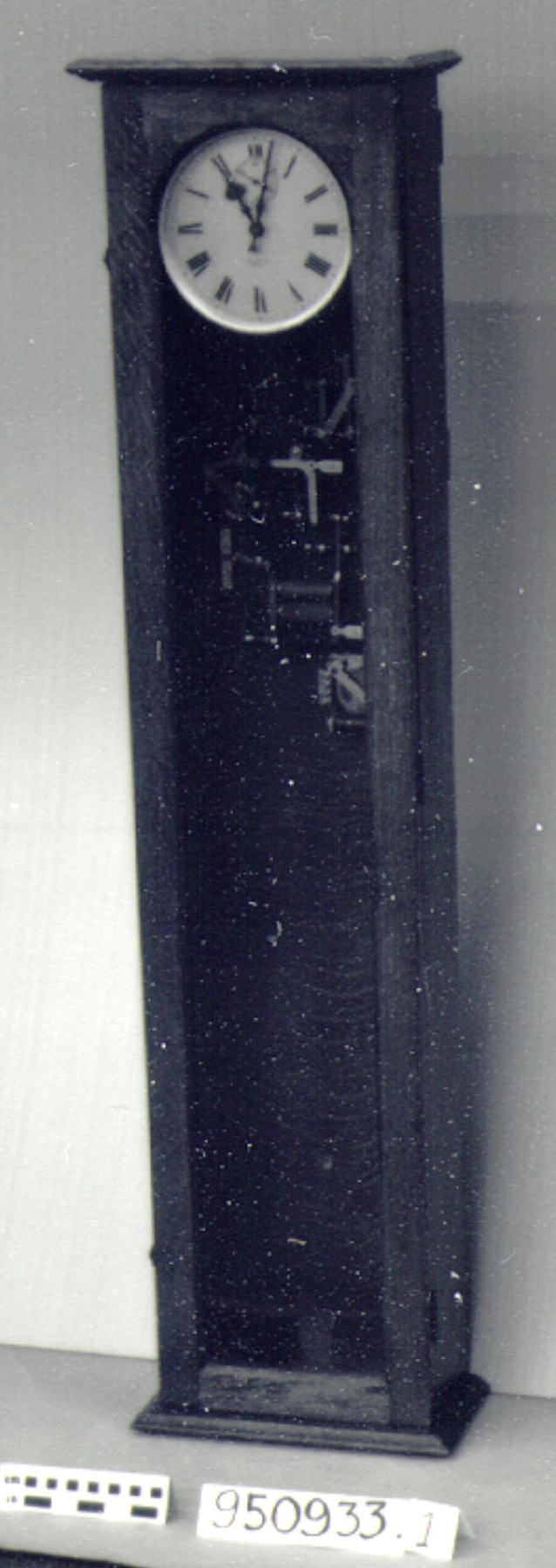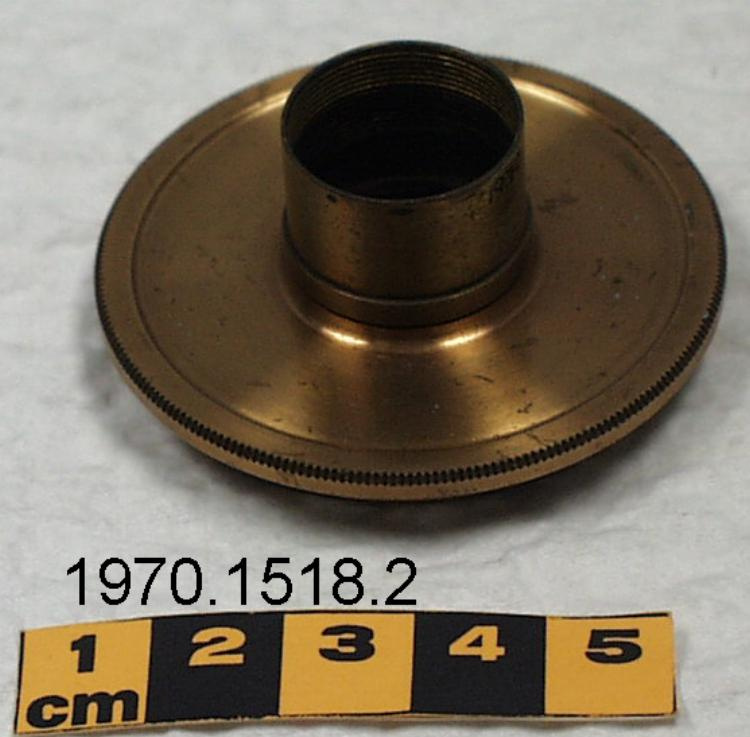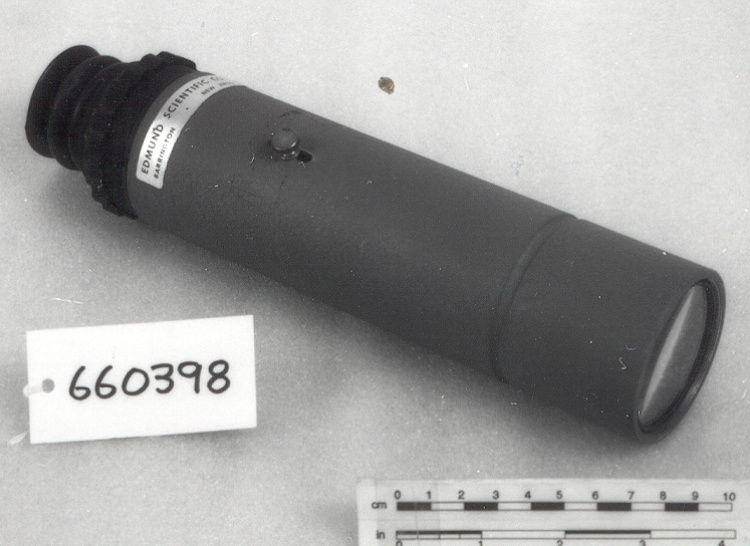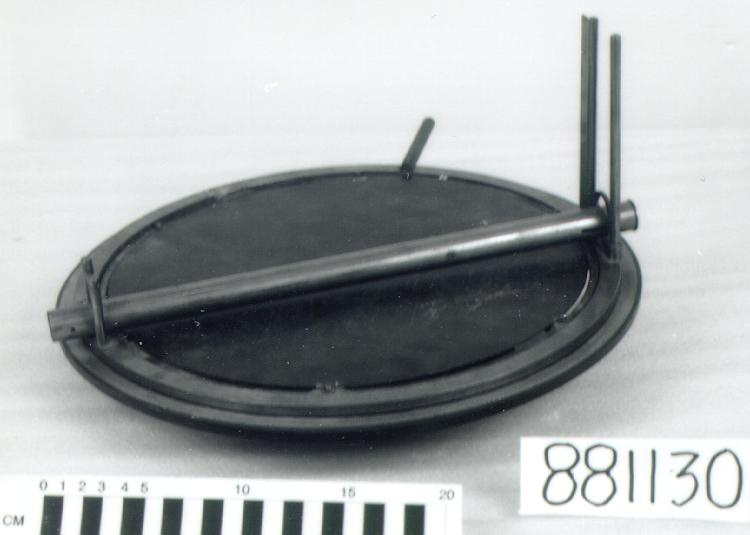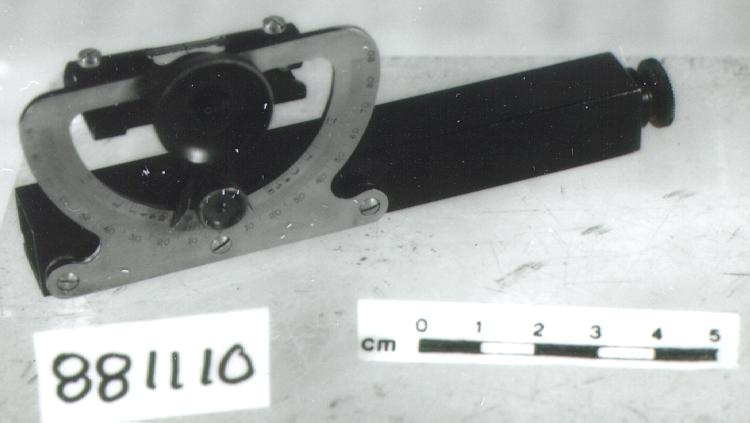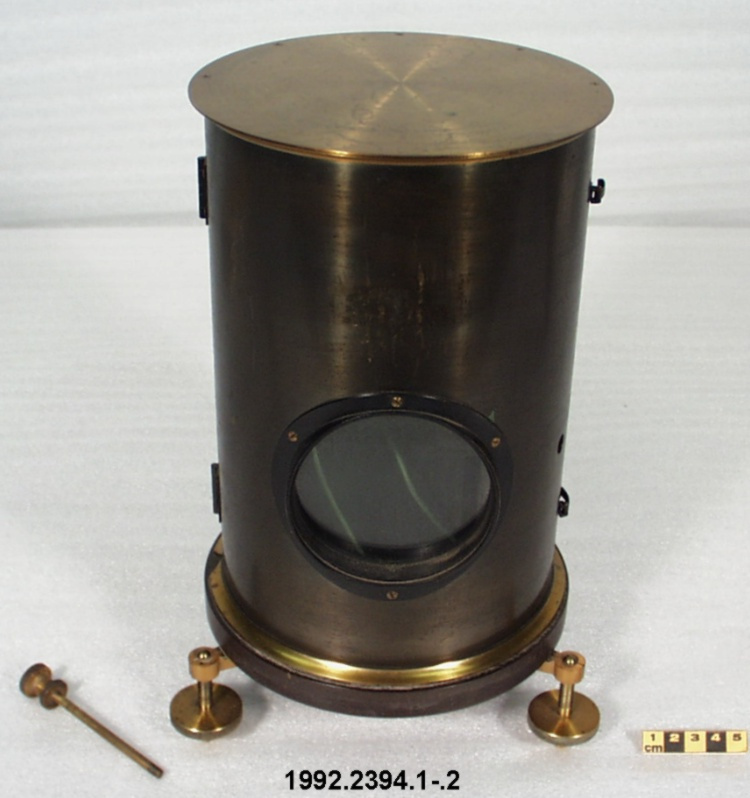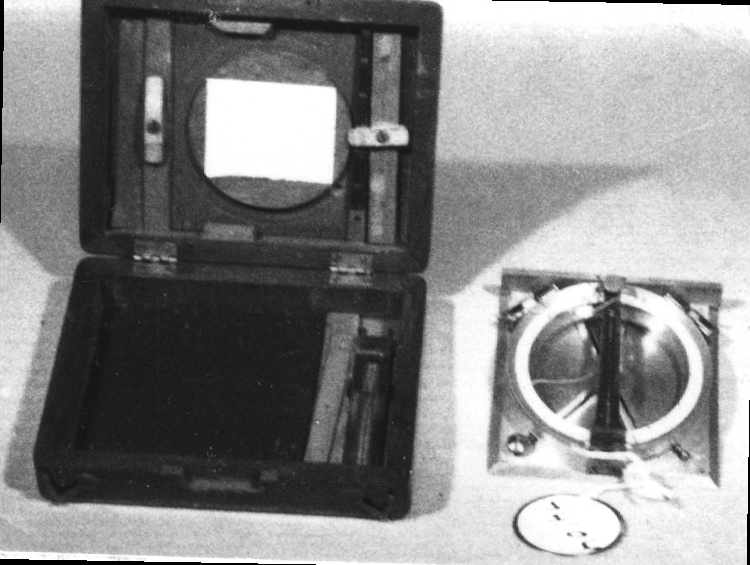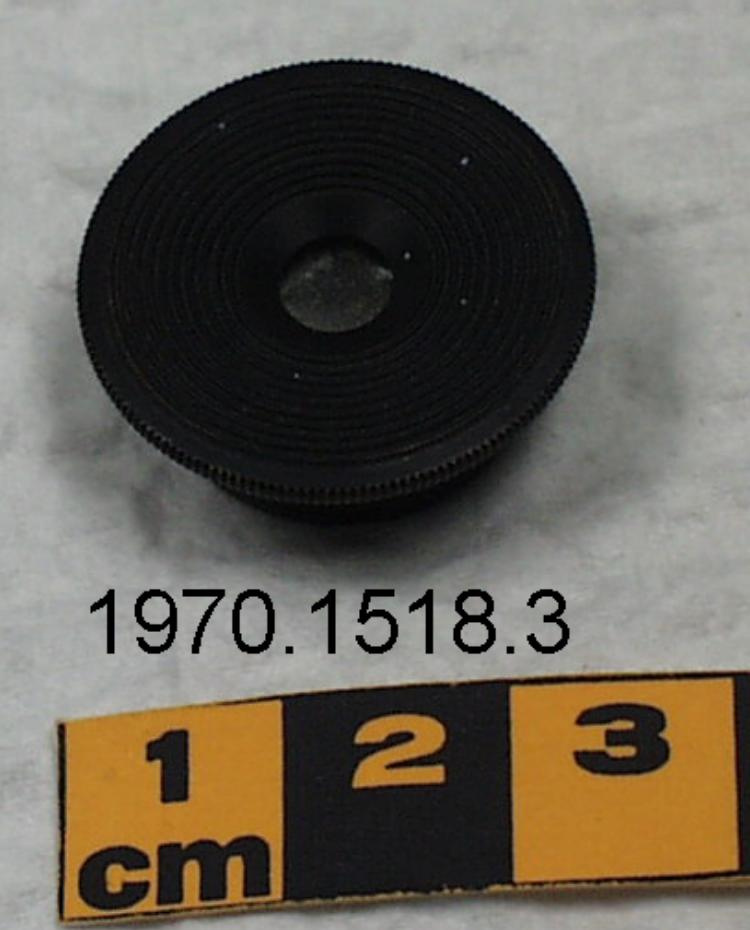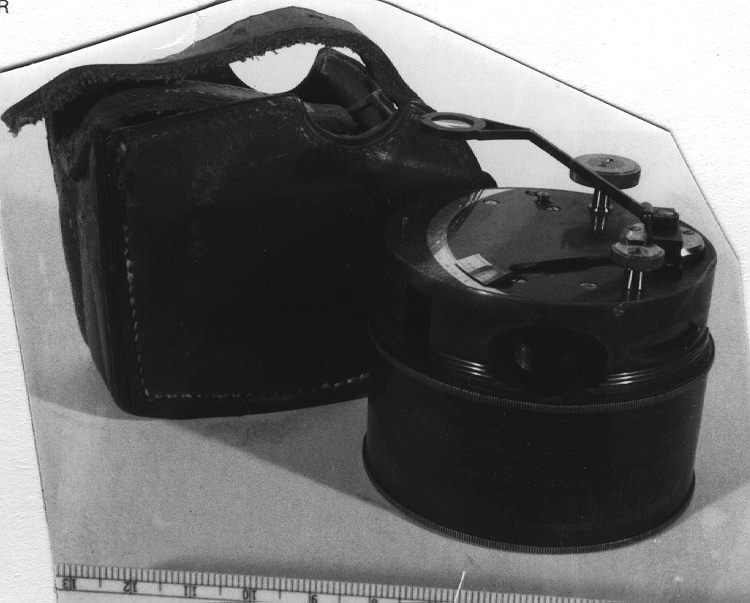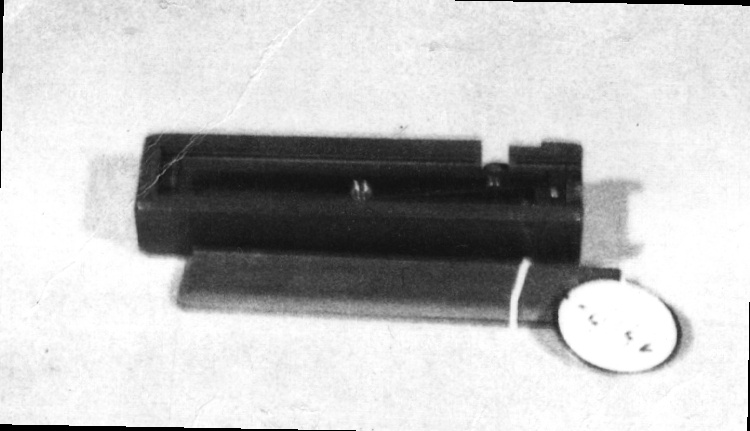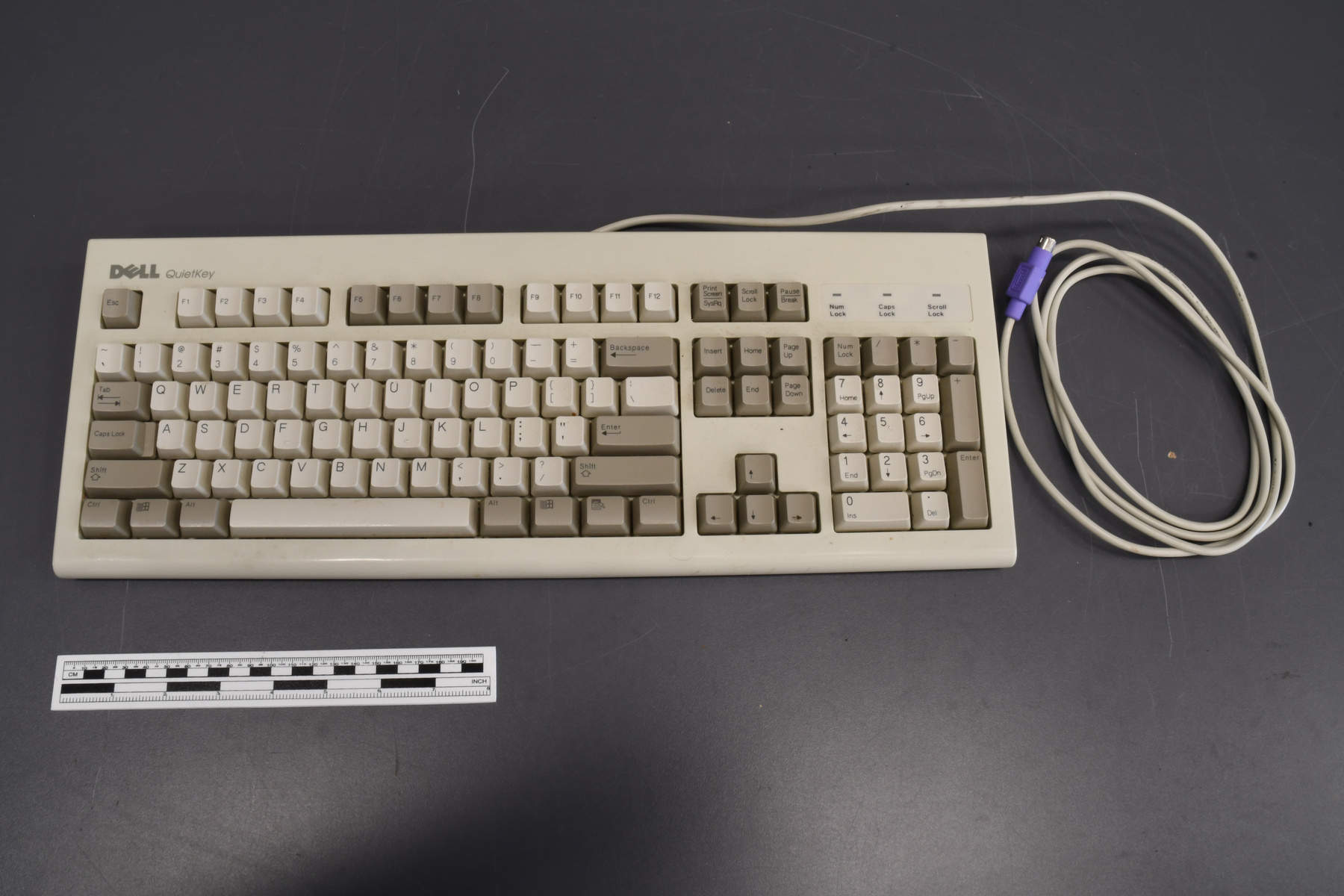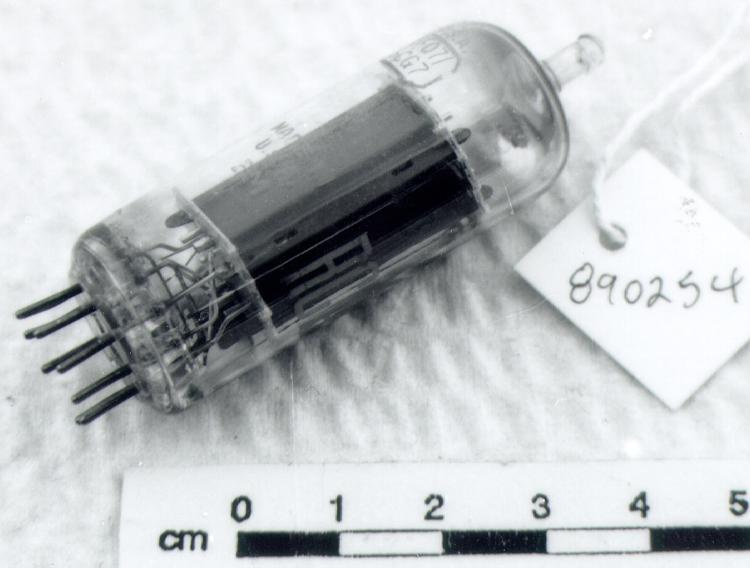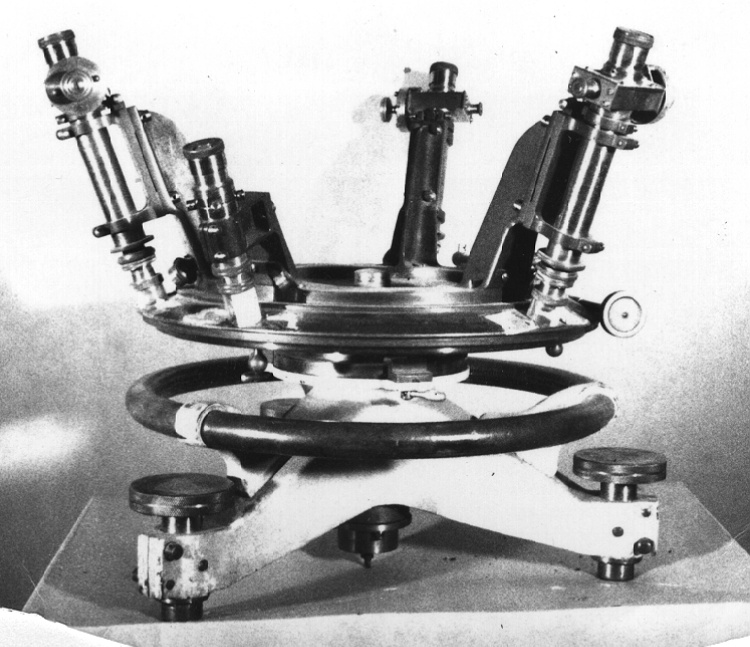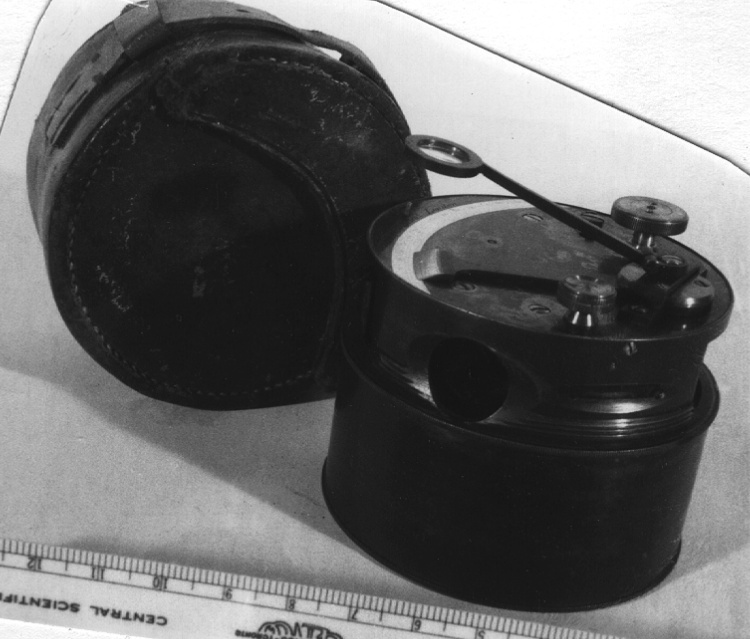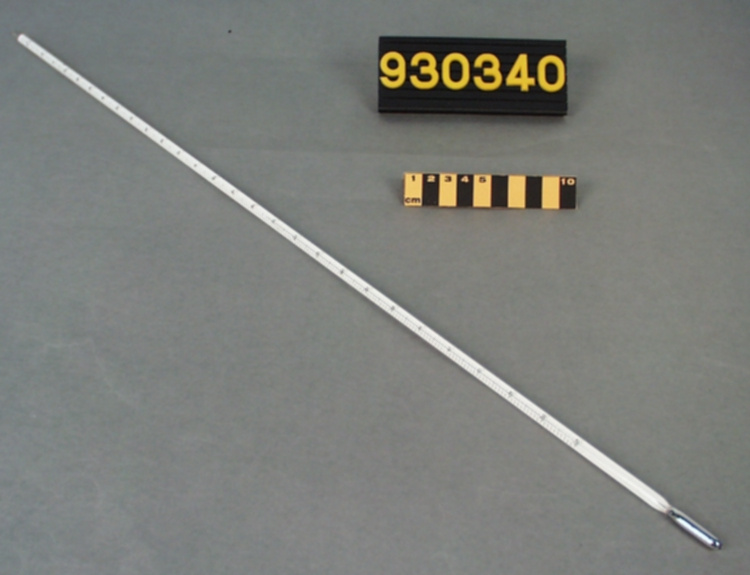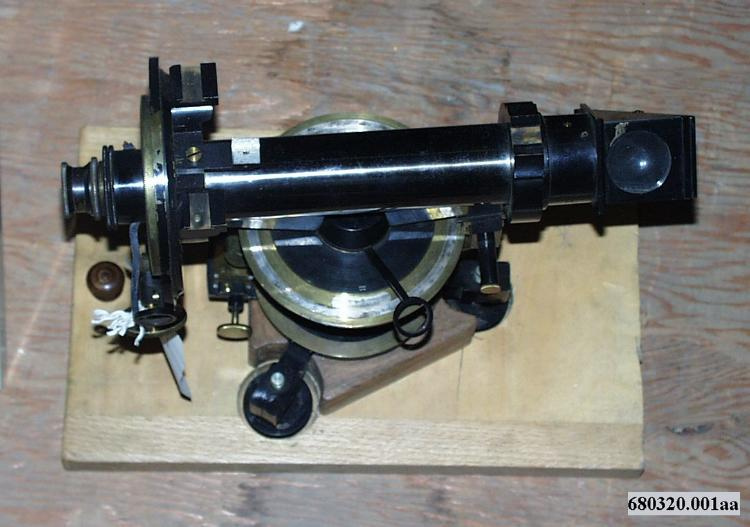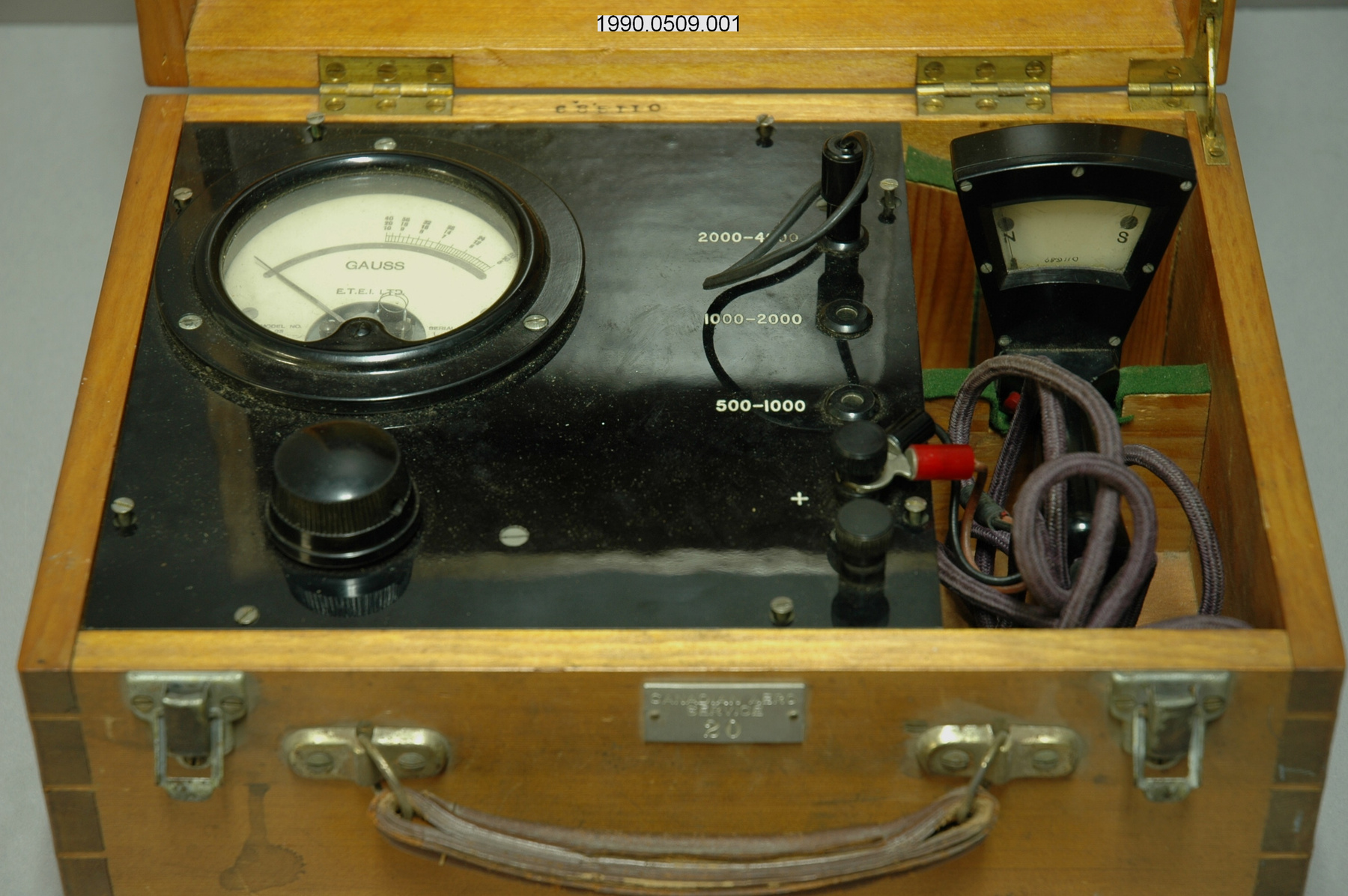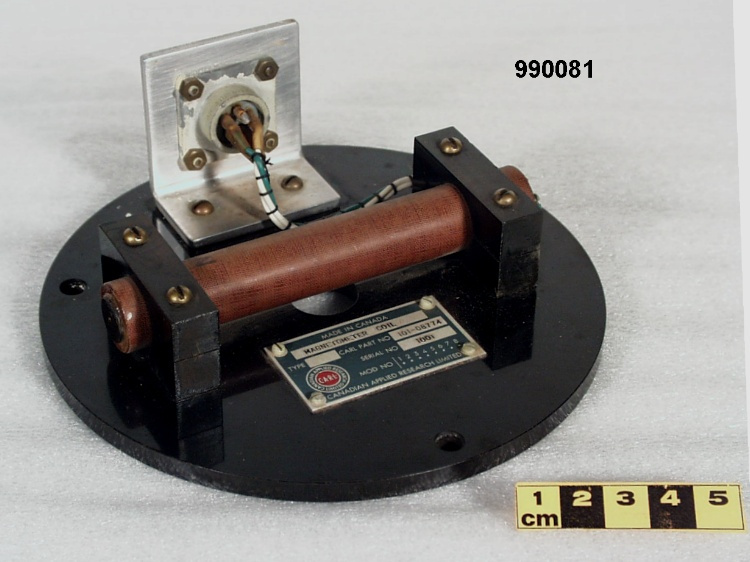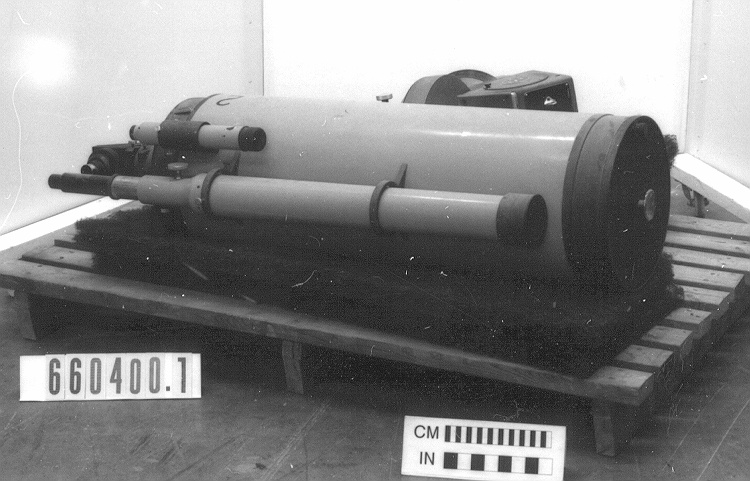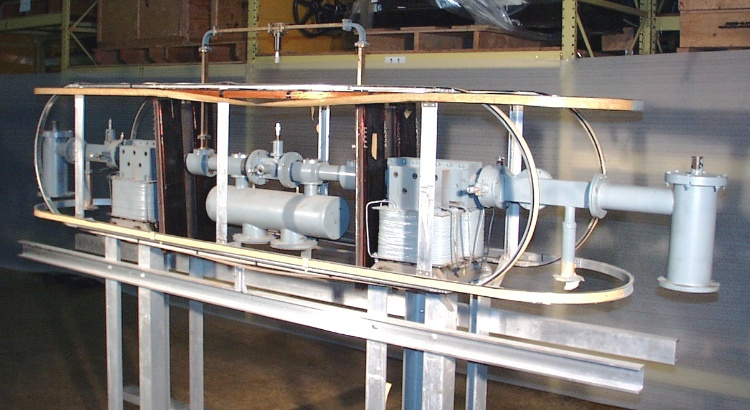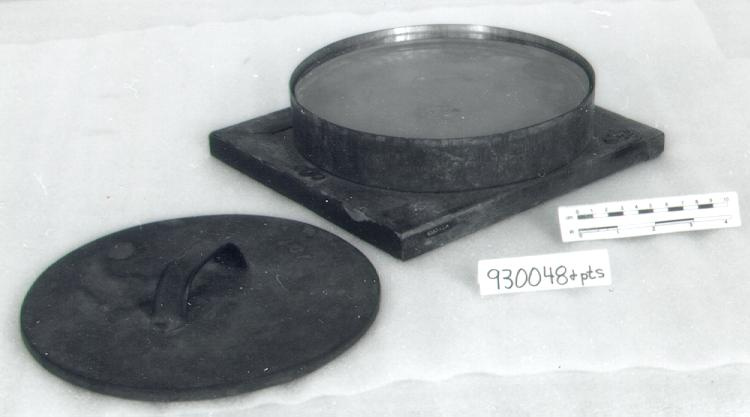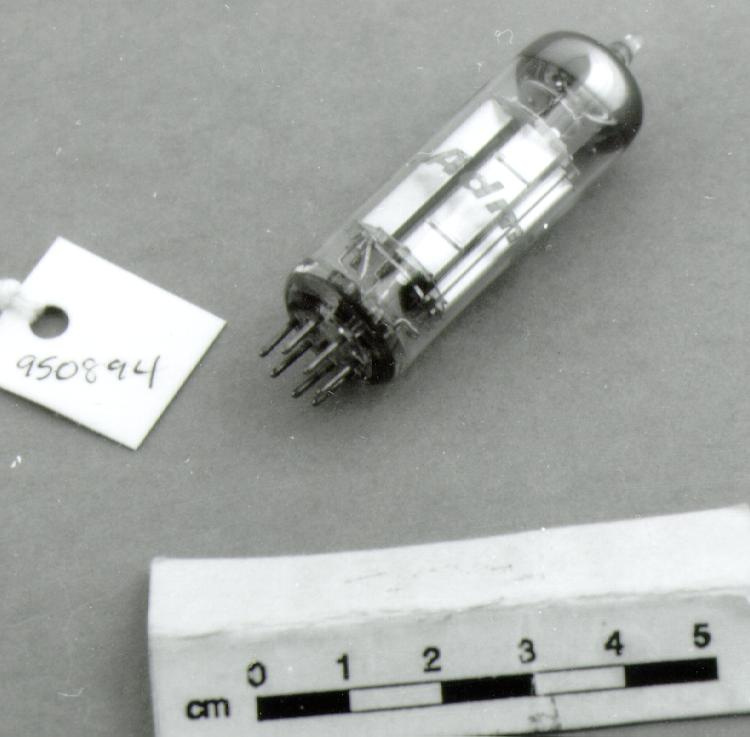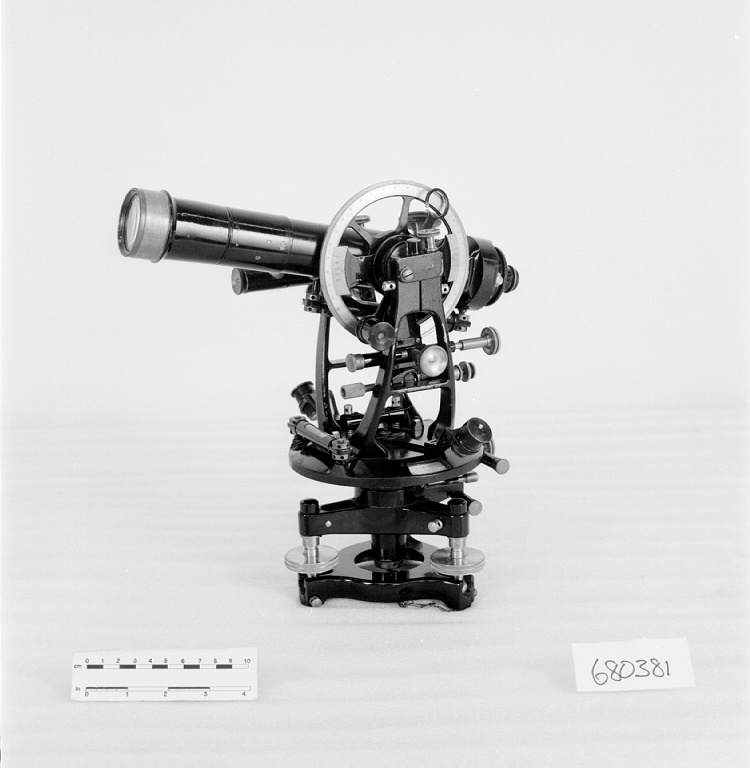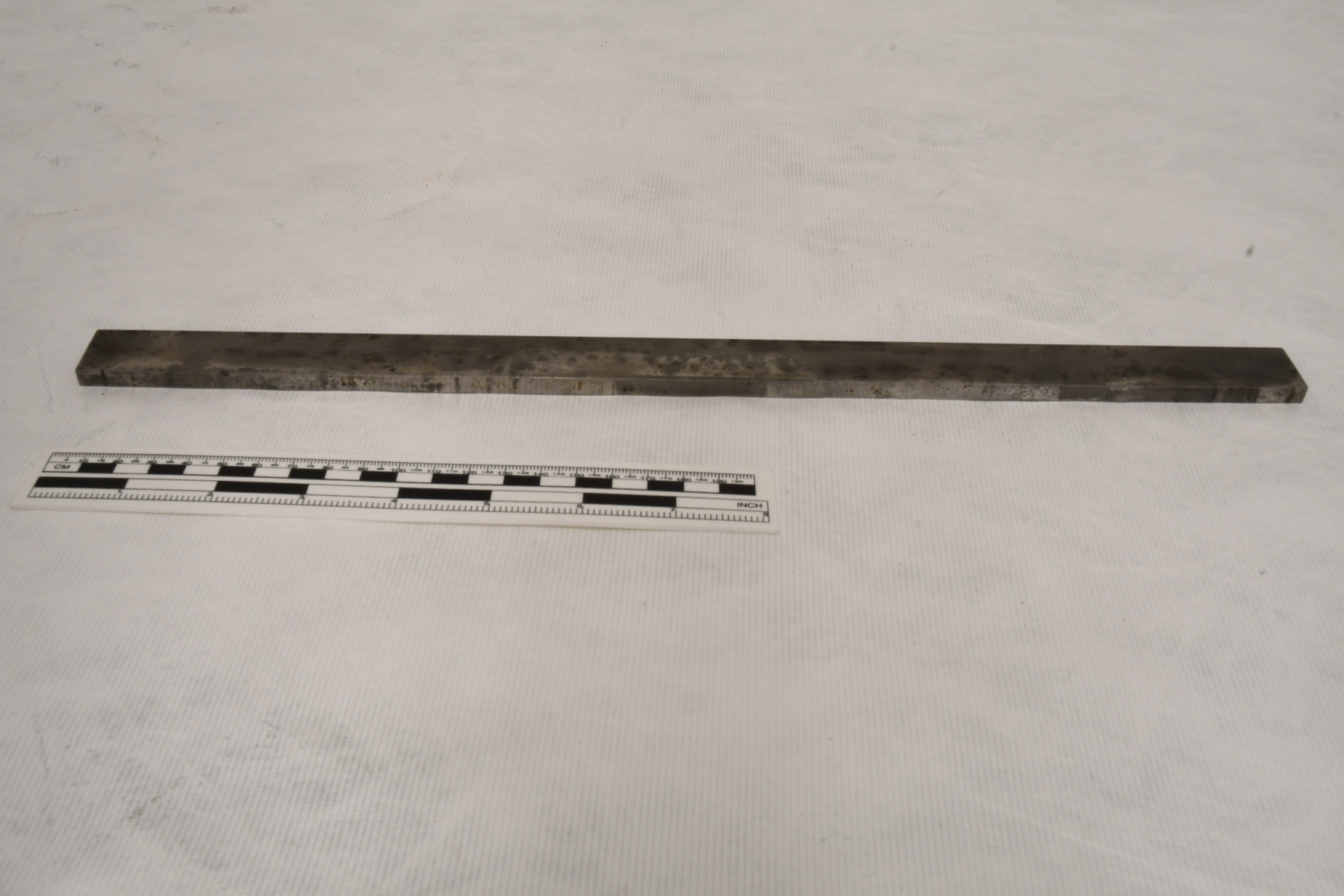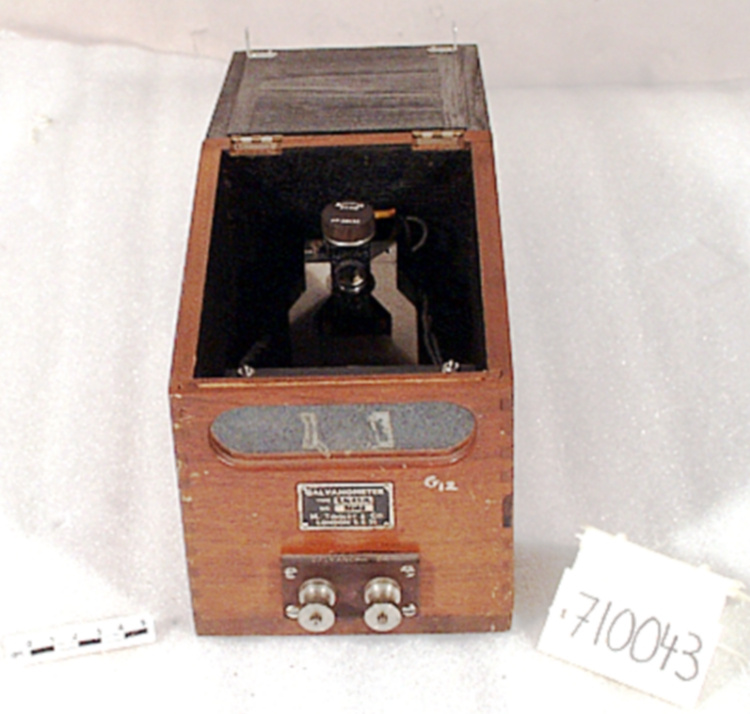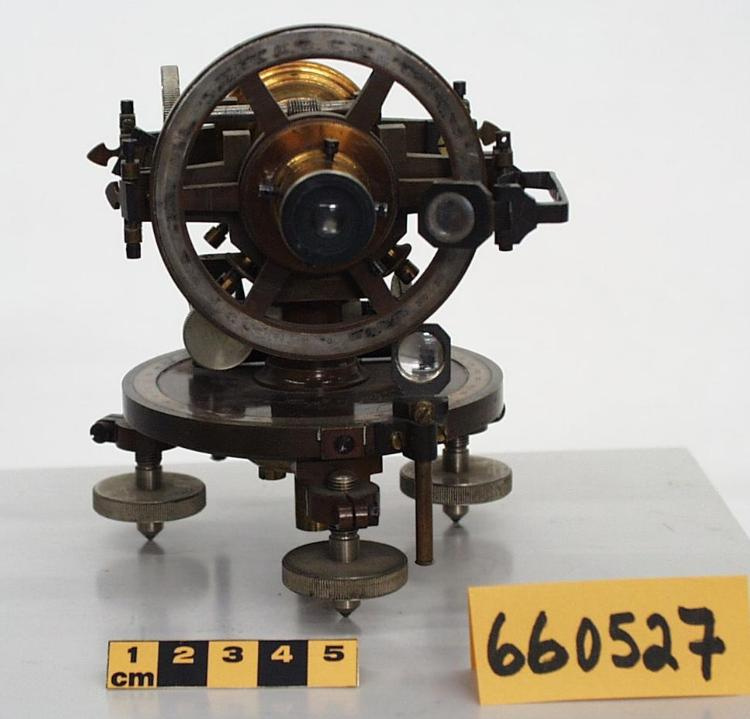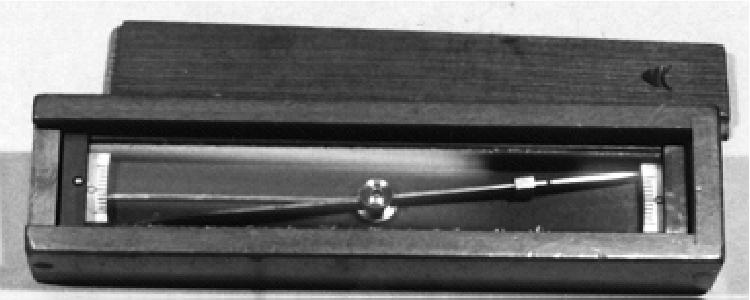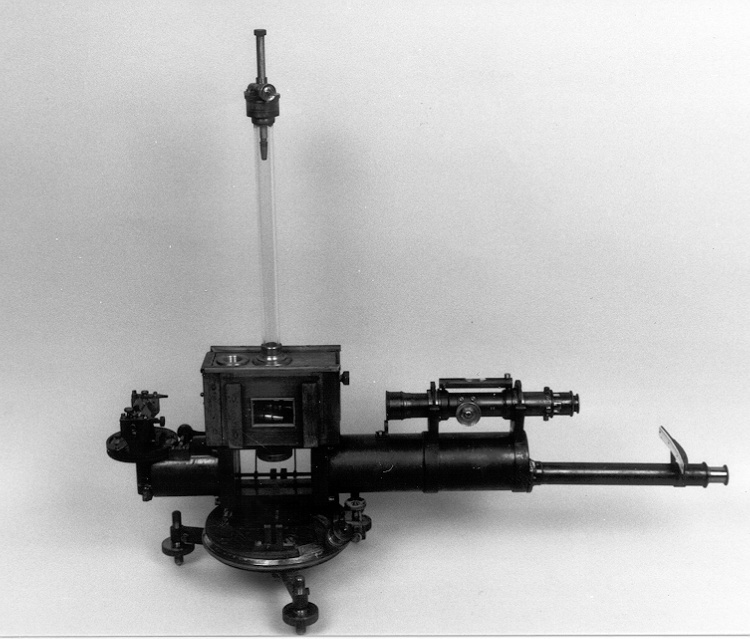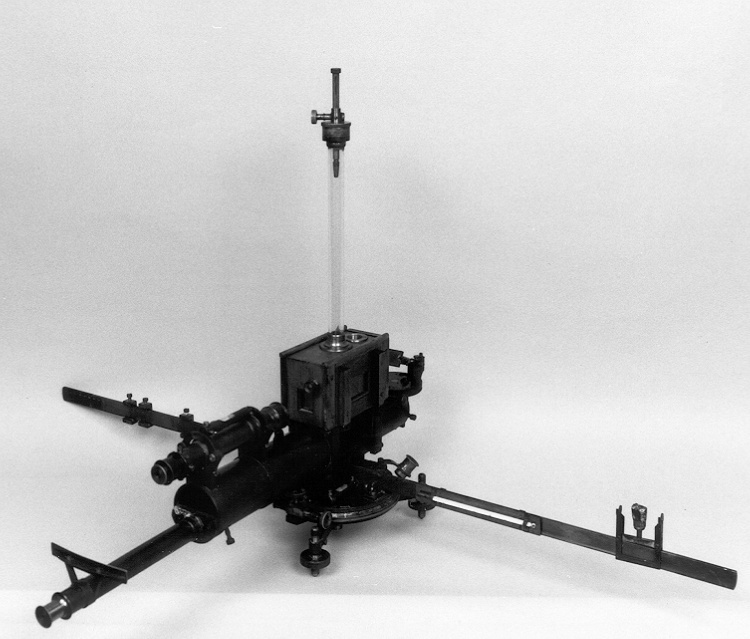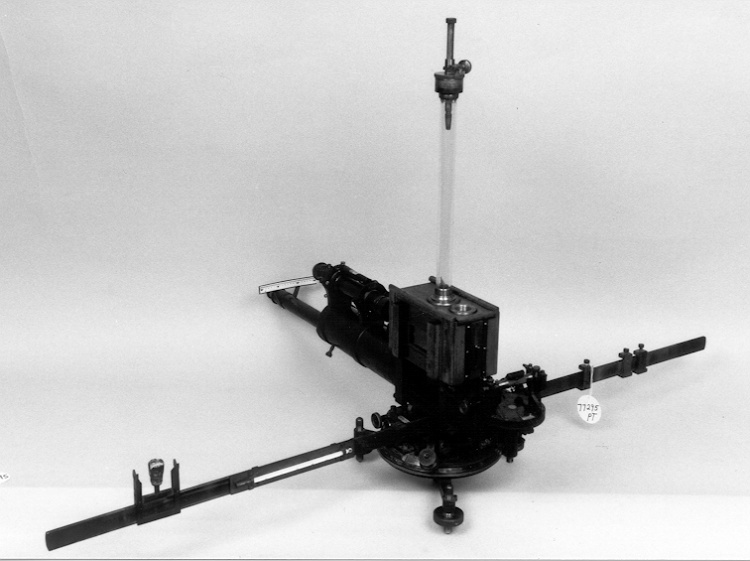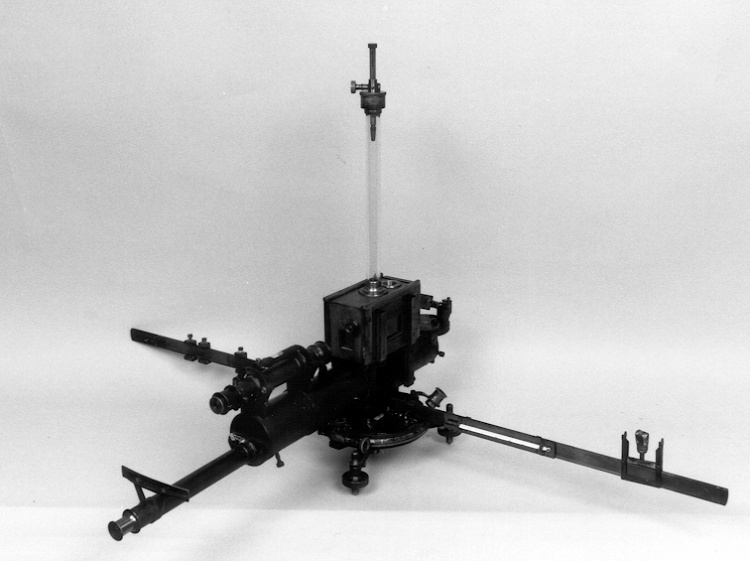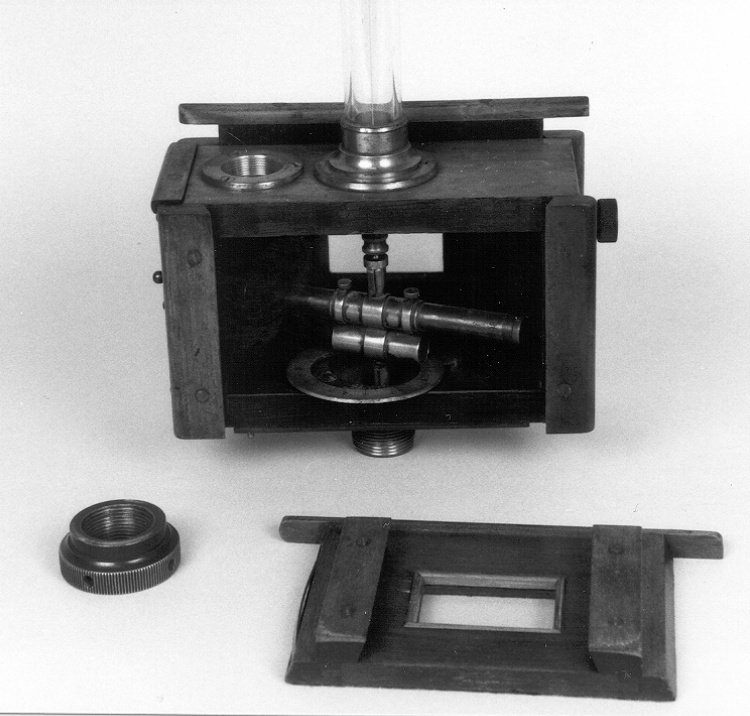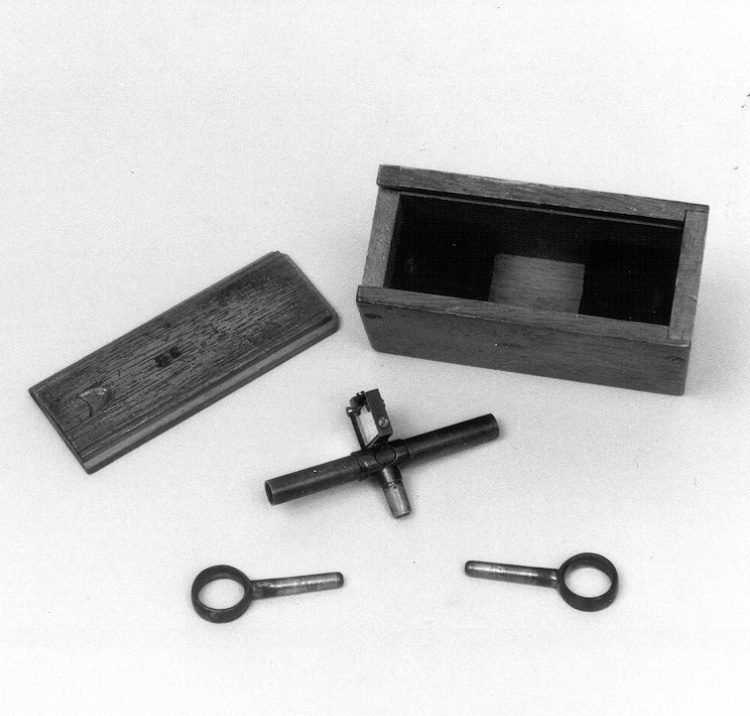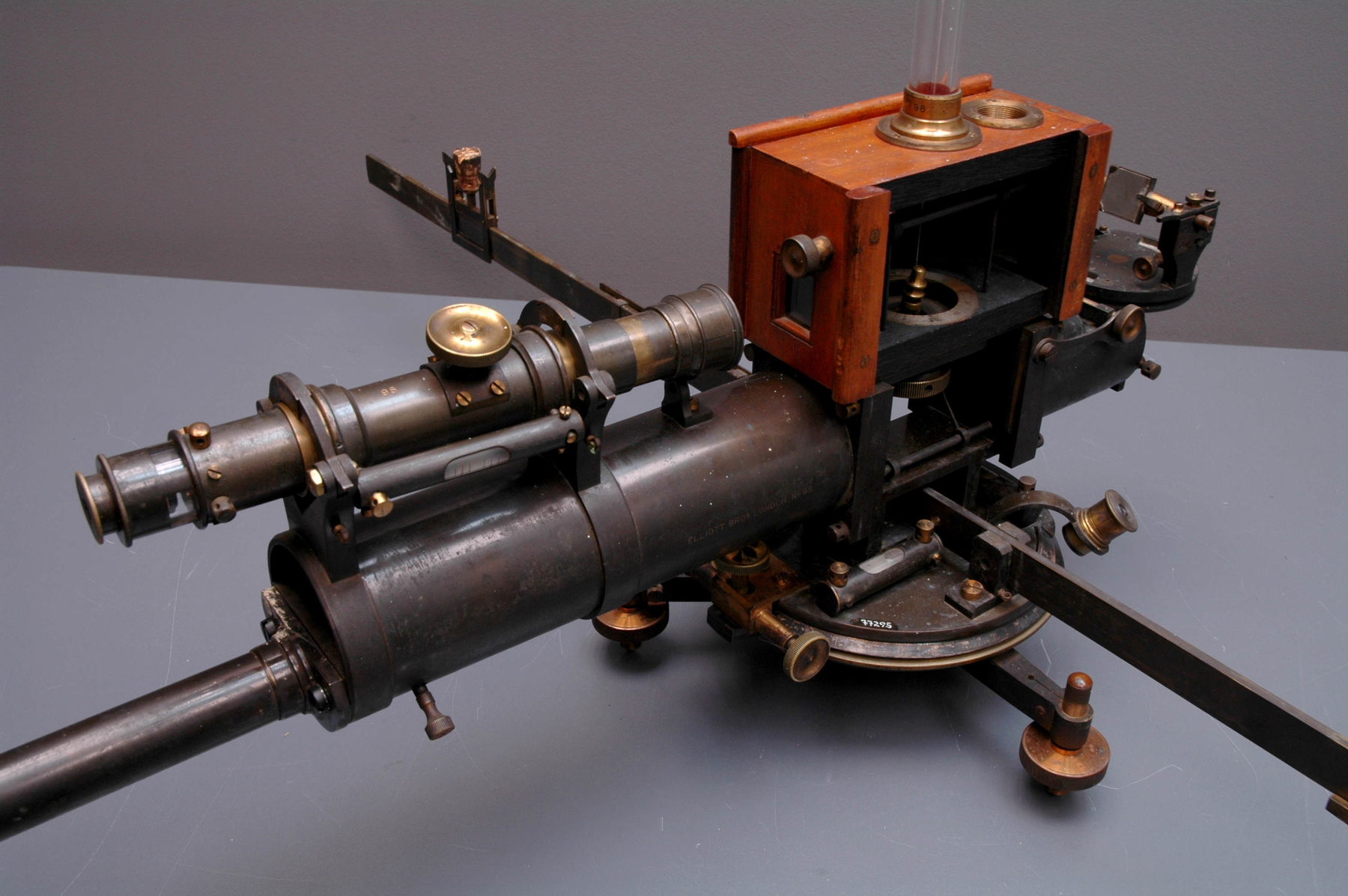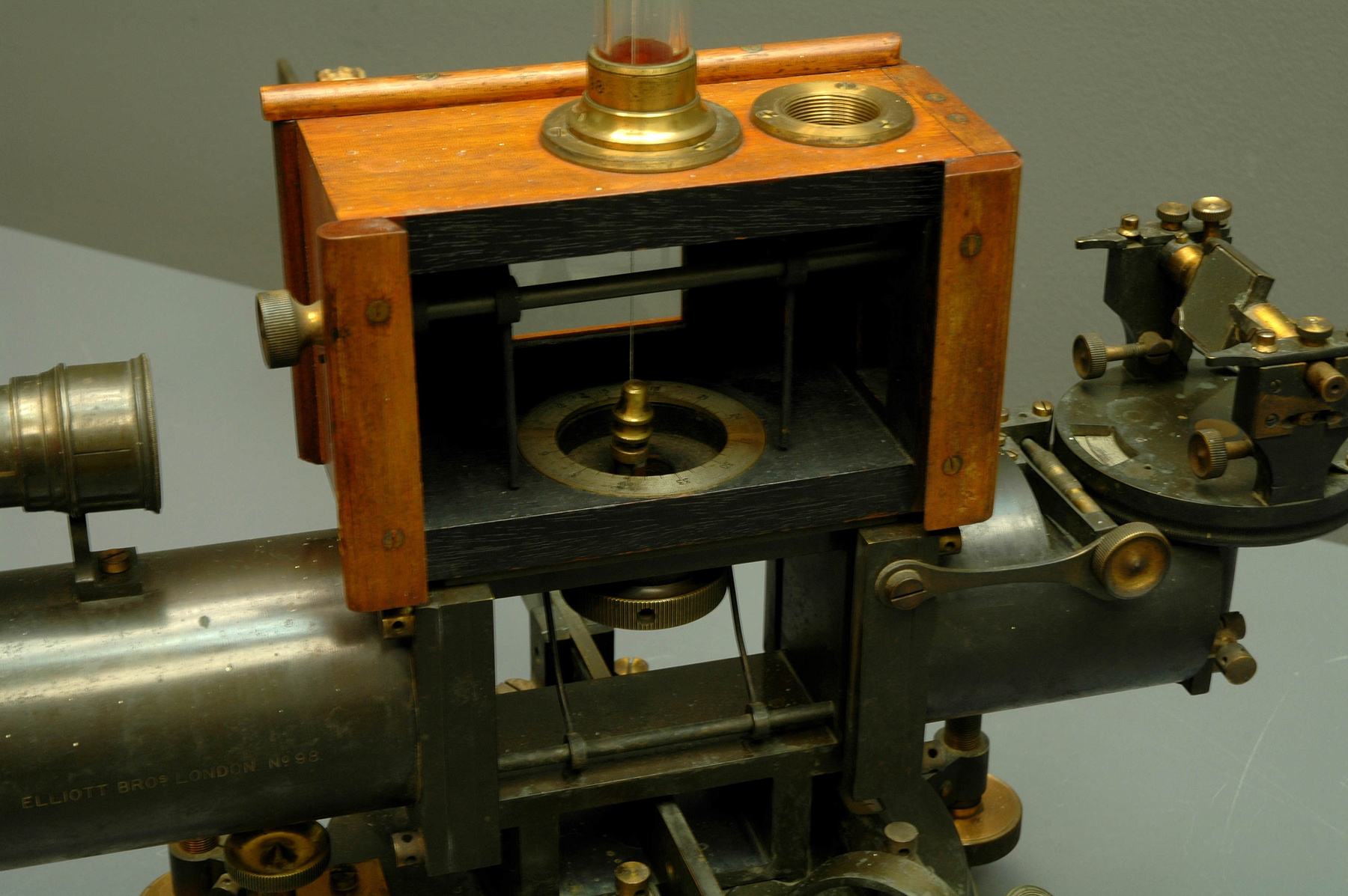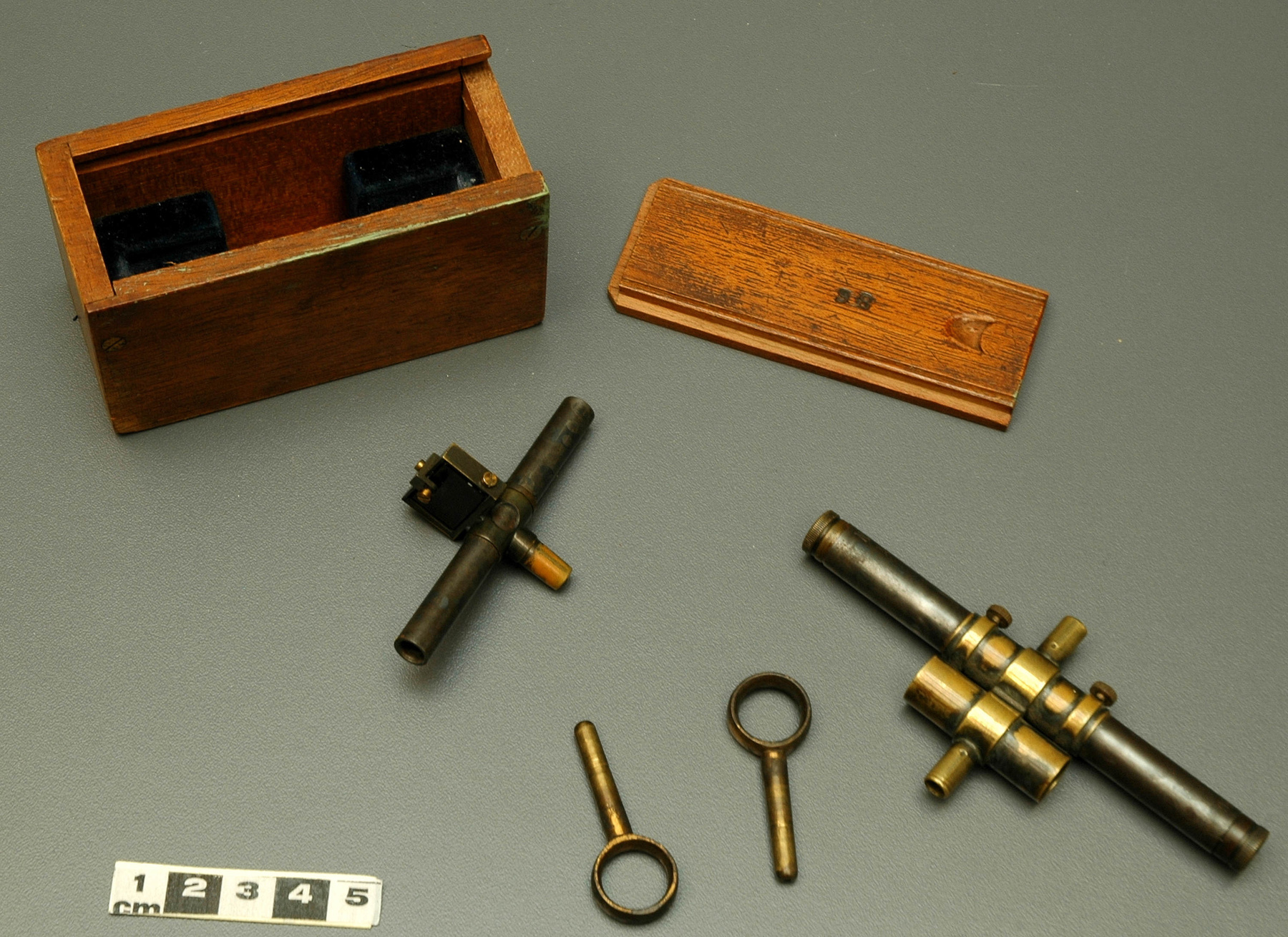Magnetometer
Use this image
Can I reuse this image without permission? Yes
Object images on the Ingenium Collection’s portal have the following Creative Commons license:
Copyright Ingenium / CC BY-NC-ND (Attribution-NonCommercial 4.0 International (CC BY-NC 4.0)
ATTRIBUTE THIS IMAGE
Ingenium,
1977.0295.001
Permalink:
Ingenium is releasing this image under the Creative Commons licensing framework, and encourages downloading and reuse for non-commercial purposes. Please acknowledge Ingenium and cite the artifact number.
DOWNLOAD IMAGEPURCHASE THIS IMAGE
This image is free for non-commercial use.
For commercial use, please consult our Reproduction Fees and contact us to purchase the image.
- OBJECT TYPE
- N/A
- DATE
- 1900
- ARTIFACT NUMBER
- 1977.0295.001
- MANUFACTURER
- Unknown
- MODEL
- Unknown
- LOCATION
- Unknown
More Information
General Information
- Serial #
- N/A
- Part Number
- 1
- Total Parts
- 1
- AKA
- N/A
- Patents
- N/A
- General Description
- Brass/ wood/ glass/ silver plate
Dimensions
Note: These reflect the general size for storage and are not necessarily representative of the object's true dimensions.
- Length
- 52.1 cm
- Width
- 25.4 cm
- Height
- 57.2 cm
- Thickness
- N/A
- Weight
- N/A
- Diameter
- N/A
- Volume
- N/A
Lexicon
- Group
- Physics
- Category
- Geophysics
- Sub-Category
- N/A
Manufacturer
- AKA
- Unknown
- Country
- Unknown
- State/Province
- Unknown
- City
- Unknown
Context
- Country
- Canada
- State/Province
- Alberta
- Period
- 1906-1954
- Canada
-
This instrument was standardized at KEW Magnetic Observatory in 1906, in England and was the standardized instrument for the measurement of the horizontal intensity H of the earth's magnetic field at Agincourt Magnetic Observatory (near Toronto) from 1906 to 1932. From 1932 to 1954 it served as the standard for the measurement of H at Meanook Magnetic Observatory, north of Edmonton, Alberta. - Function
-
Measures horizontal intensity of earths magnetic field, and the angle between true and magnetic north. - Technical
-
This instrument was provided with two magnets - one long and one short. The long magnet is hollow, and contains a collimating lens and a glass scale. To measure the magnetic declination, it was suspended by a strand of silk and its direction was observed with the lower telescope. The direction of geographic north was determined from the sun or stars by the upper telescope and mirror. The intensity of the horizontal component of the geomagnetic field was determined by the method attributed to Gauss and Weber. First, the period of oscillation of the long magnet was measured. It depends on the moment of inertia of the magnet, and on its magnetic moment times the horizontal intensity. Then, the short magnet, which is provided with a mirror, is suspended on the fibre. The long magnet is placed on the deflection bar an accurately known distance from the short magnet. The angle by which the long magnet deflects the short magnet depends on the ratio of the long magnet's magnetic moment to the horizontal intensity. From the product and the ratio, both the magnetic moment of the long magnet, and the horizontal intensity can be calculated. - Area Notes
-
Unknown
Details
- Markings
- N/A
- Missing
- A thermometer which fitted into the taped hole in the top of the oscillation box, and the inertia bar
- Finish
- Dark (black)/ (oxydized?)
- Decoration
- N/A
CITE THIS OBJECT
If you choose to share our information about this collection object, please cite:
Unknown Manufacturer, Magnetometer, between 1900, Artifact no. 1977.0295, Ingenium – Canada’s Museums of Science and Innovation, http://collection.ingeniumcanada.org/en/id/1977.0295.001/
FEEDBACK
Submit a question or comment about this artifact.
More Like This
